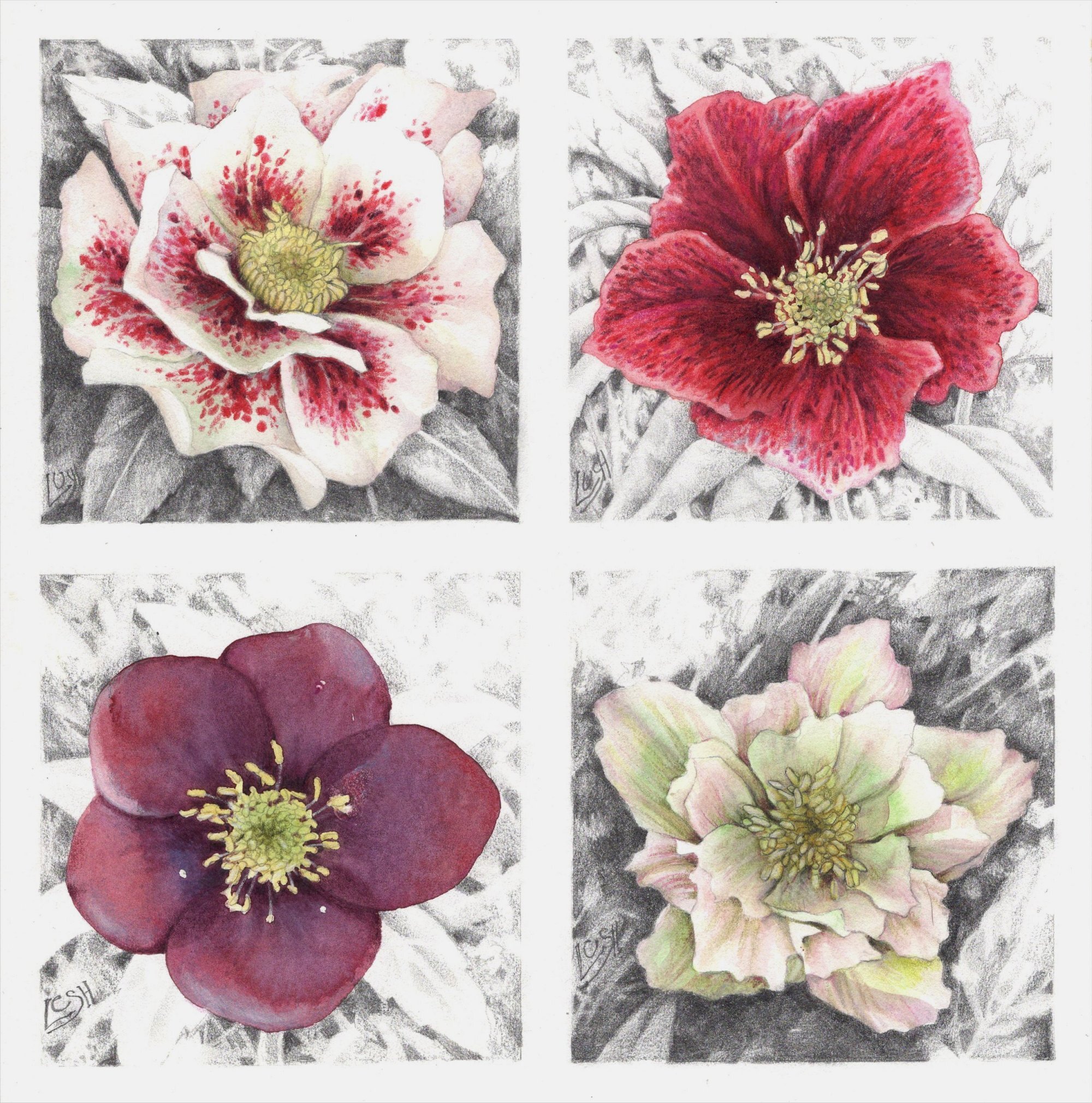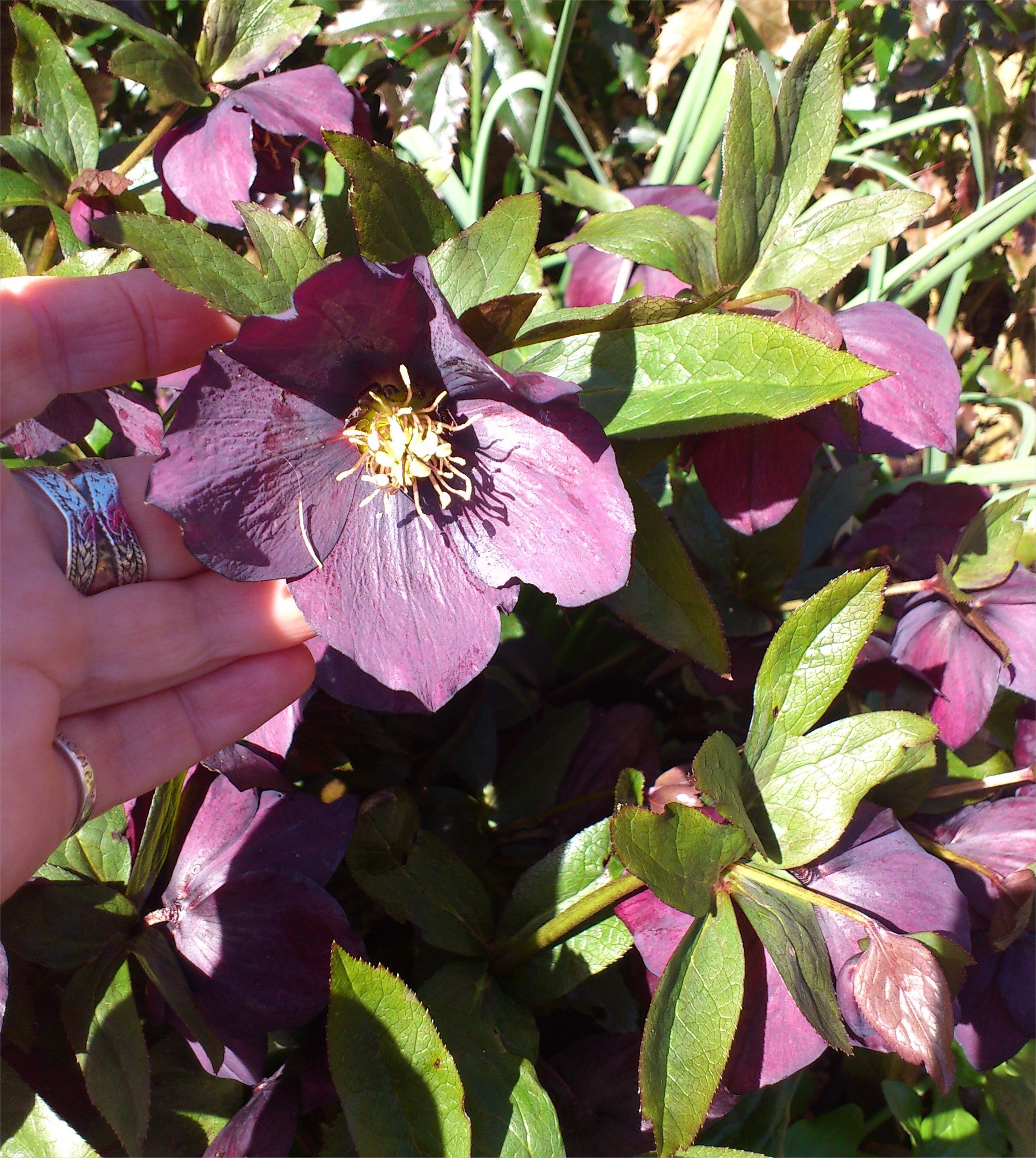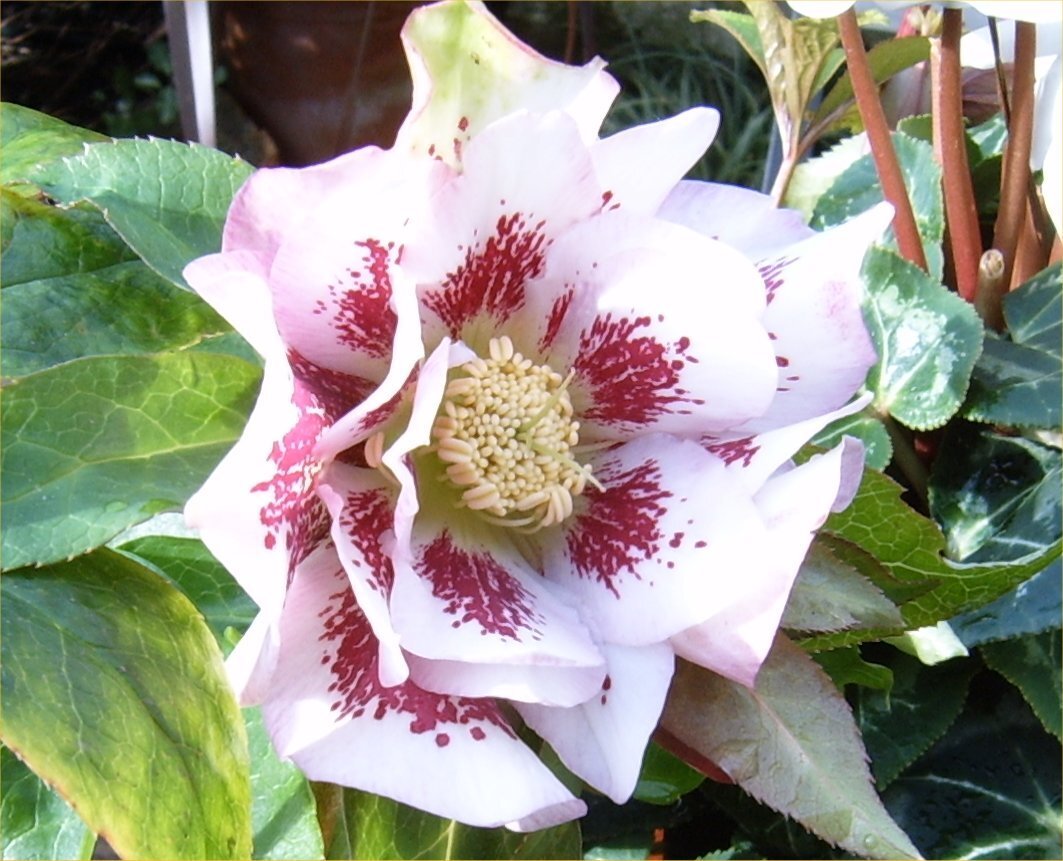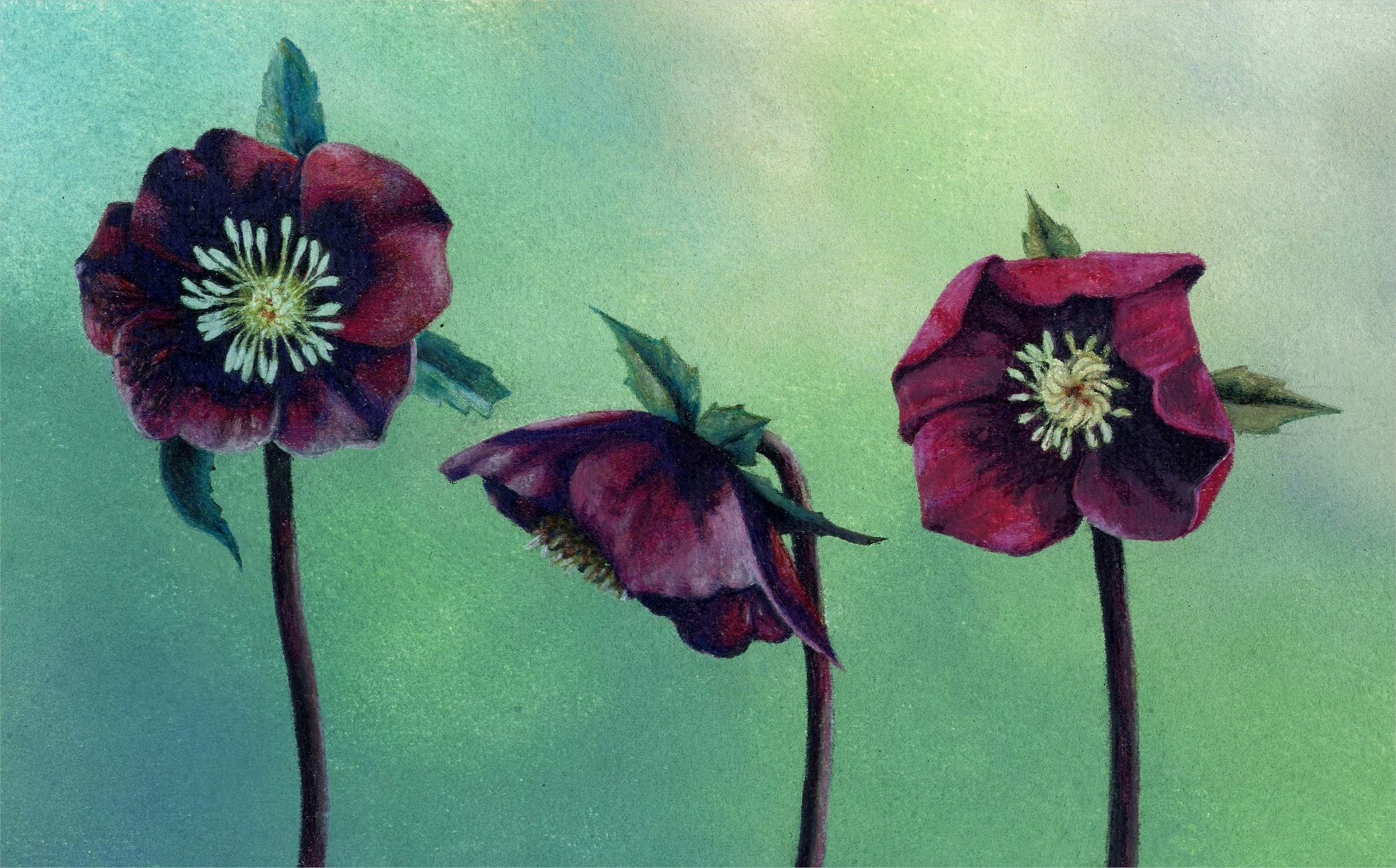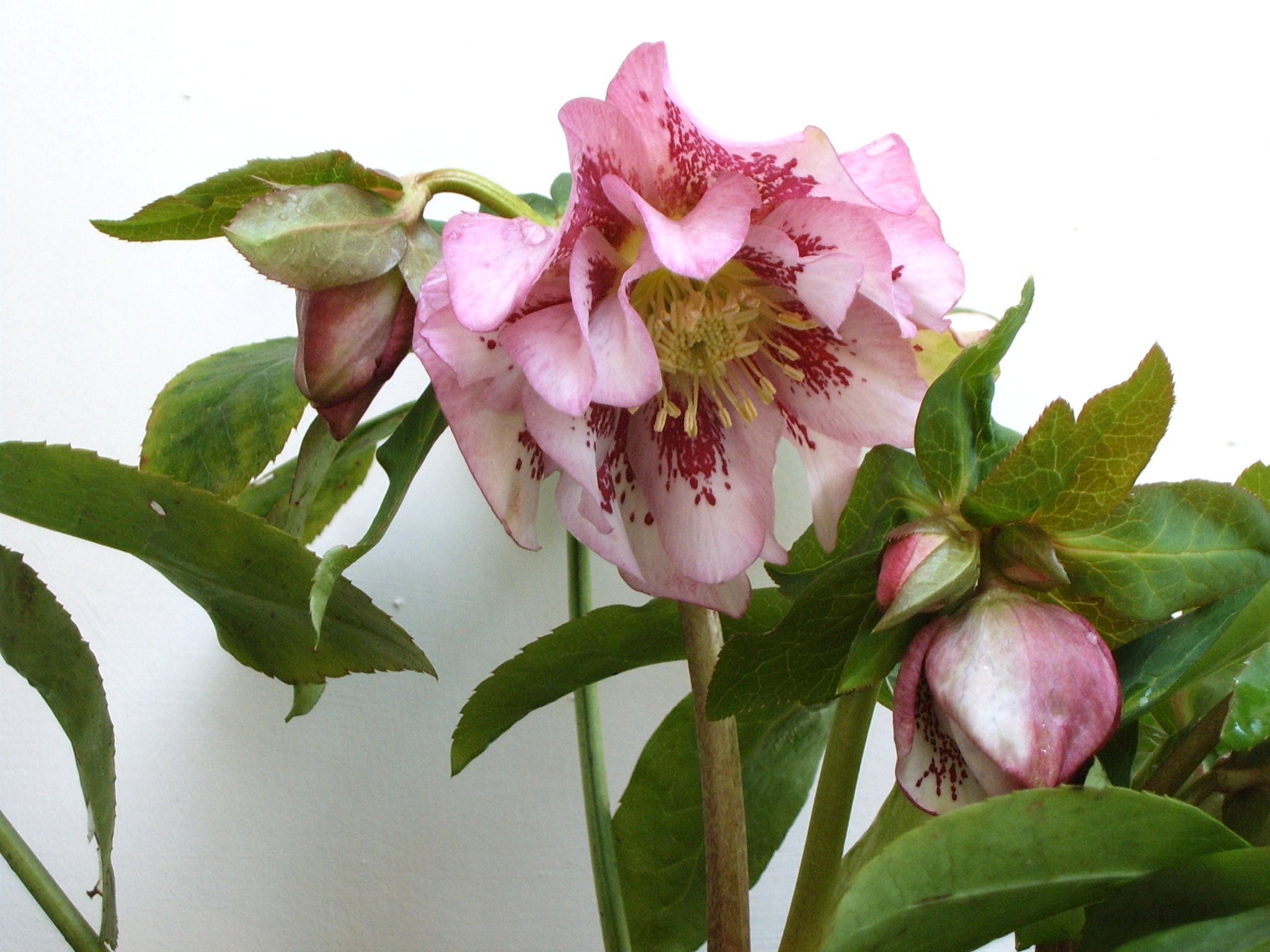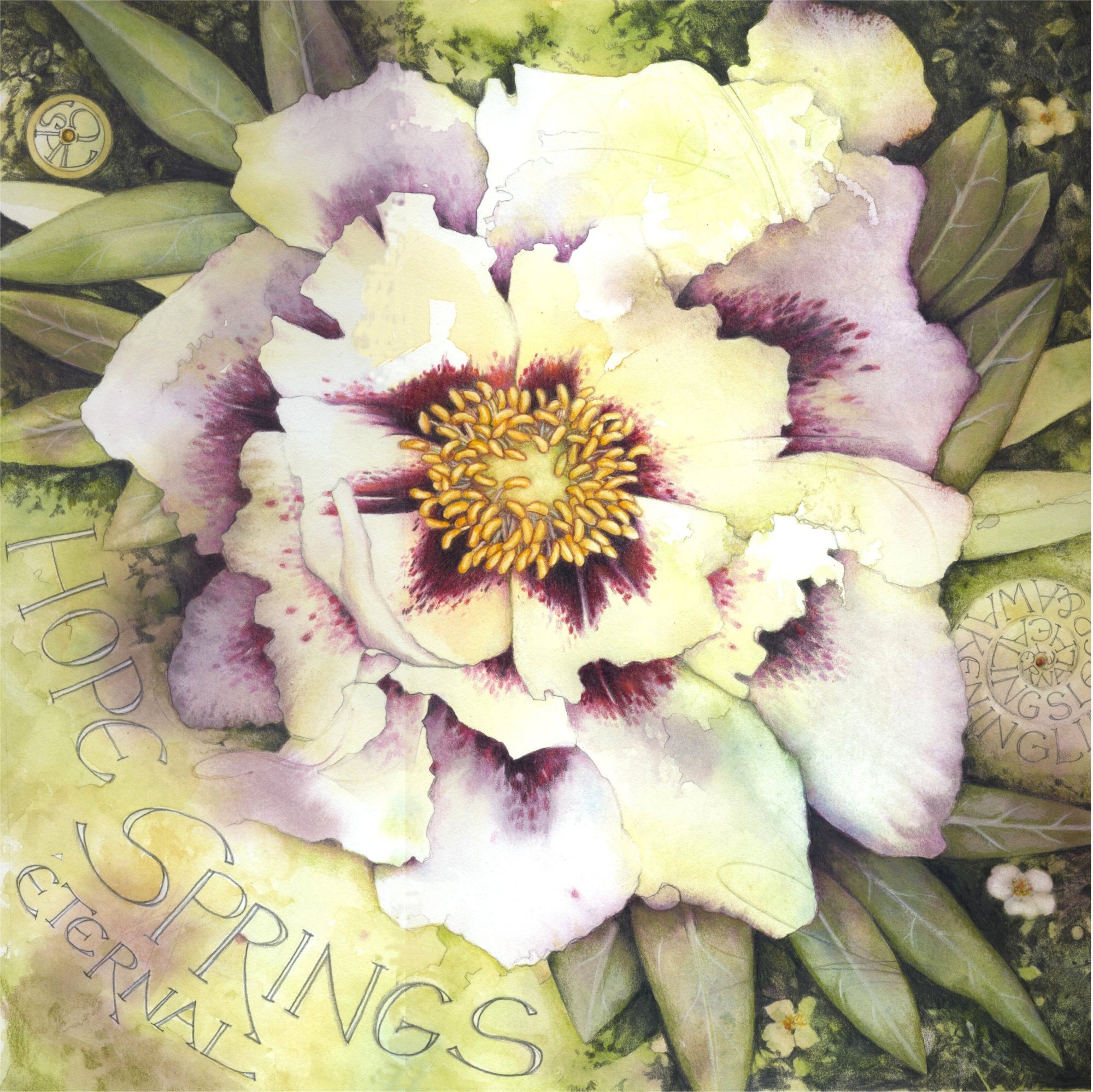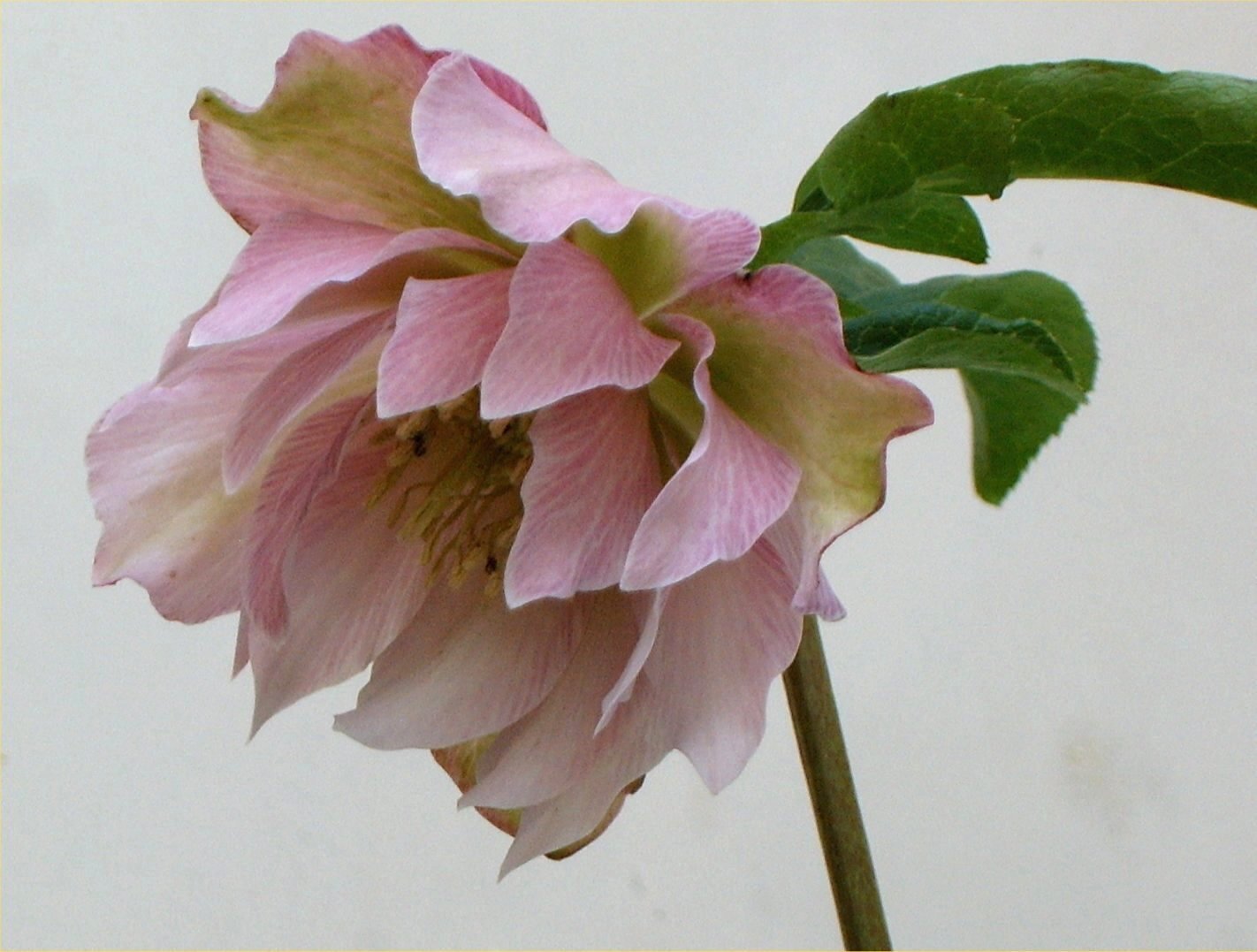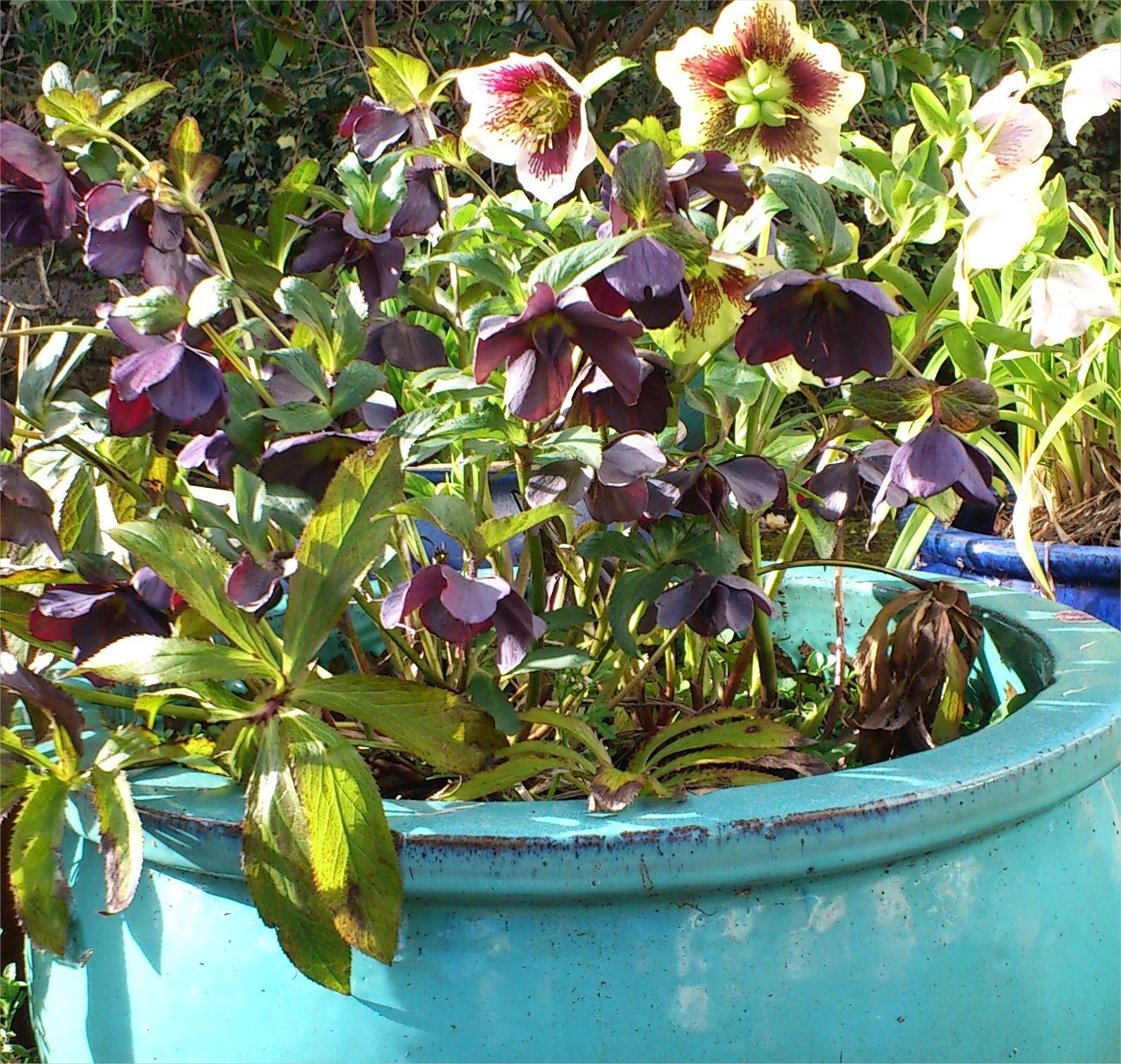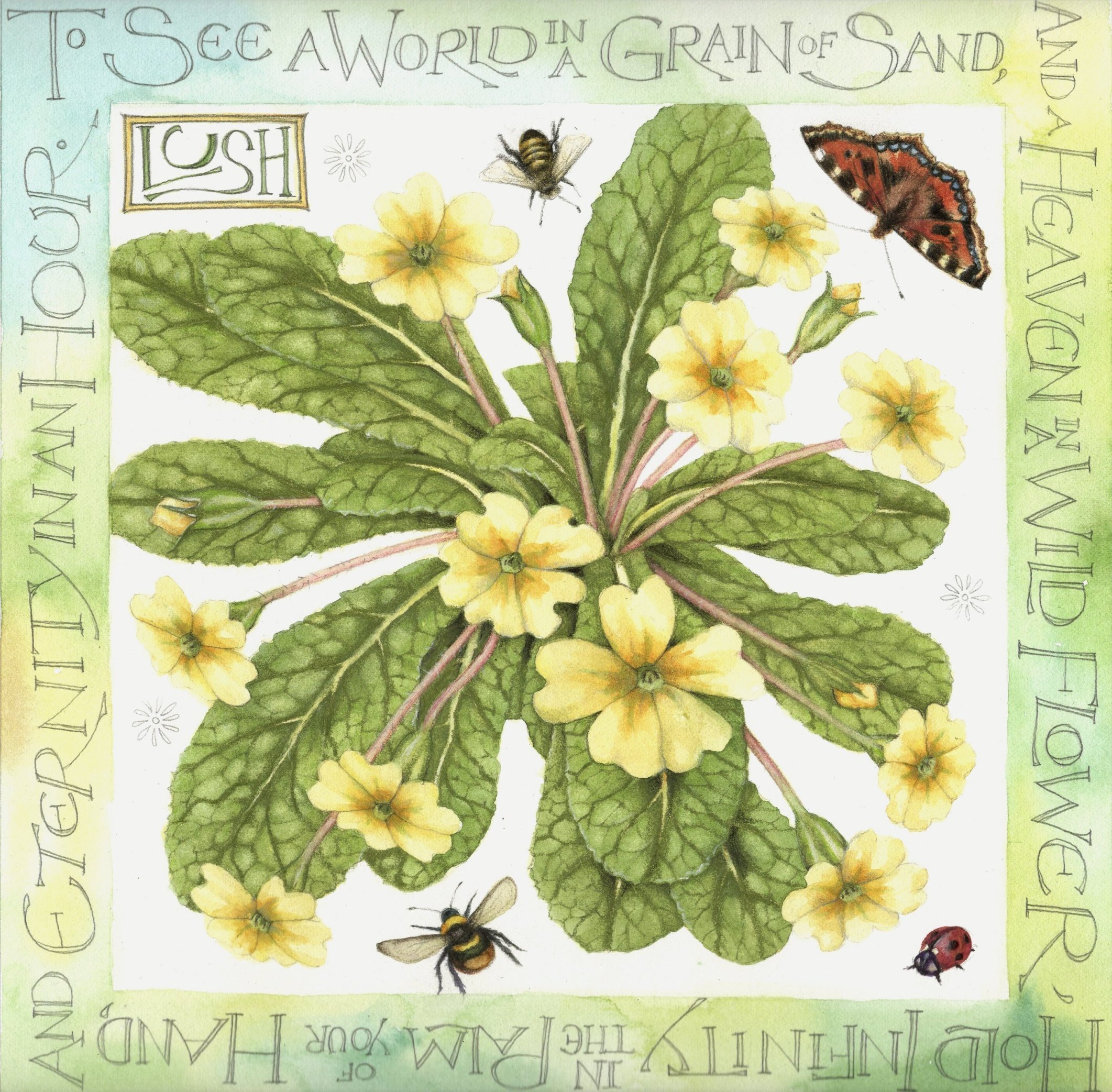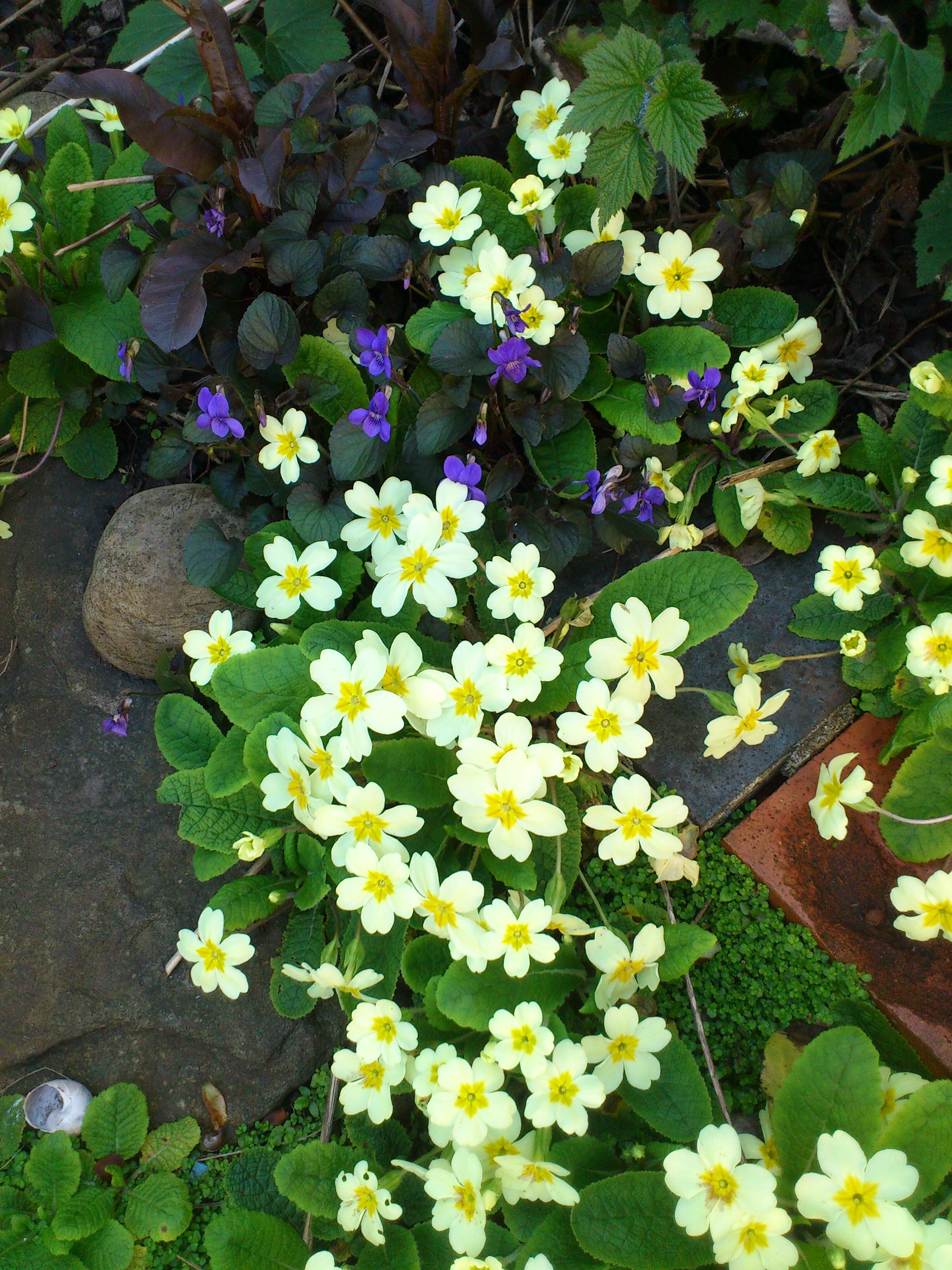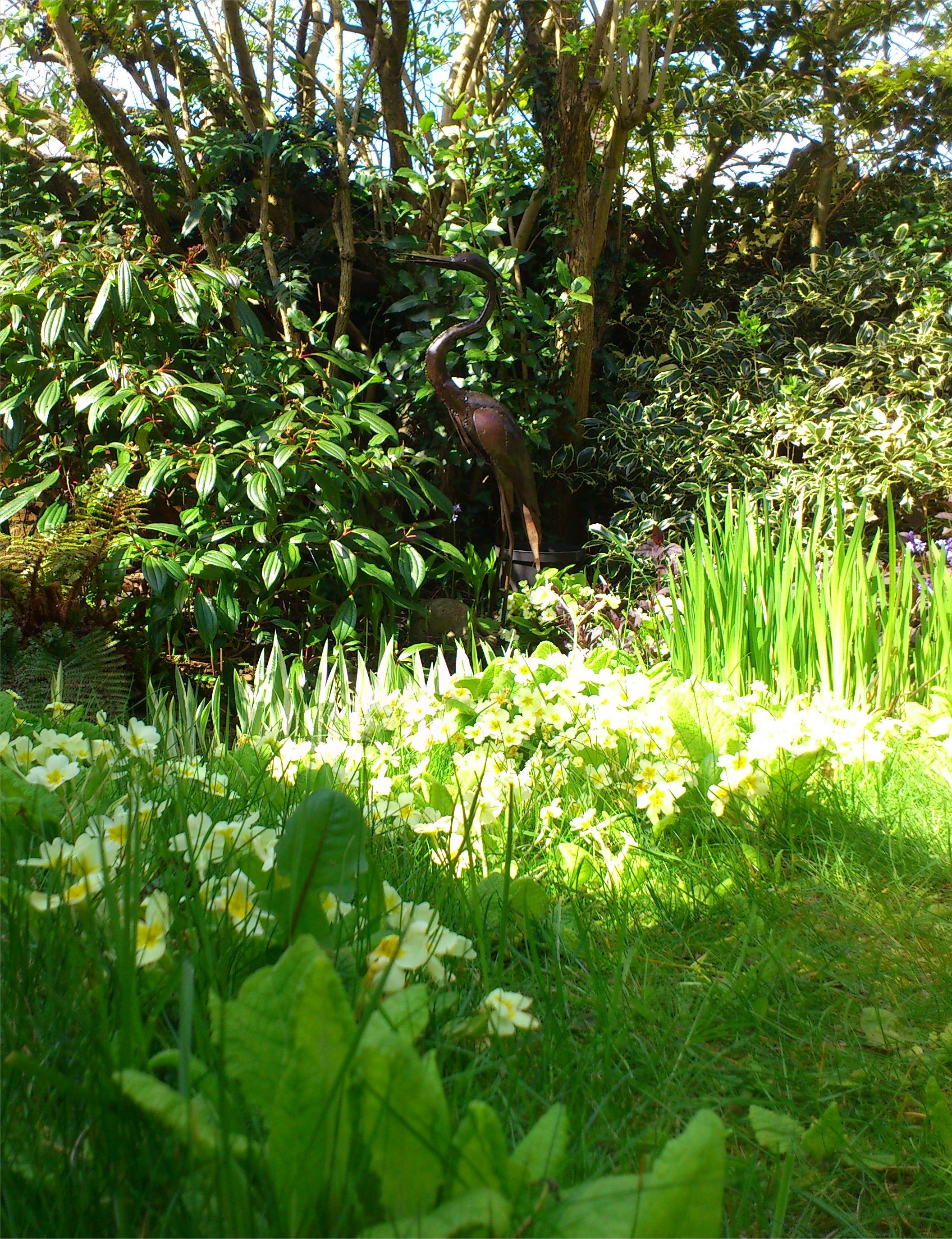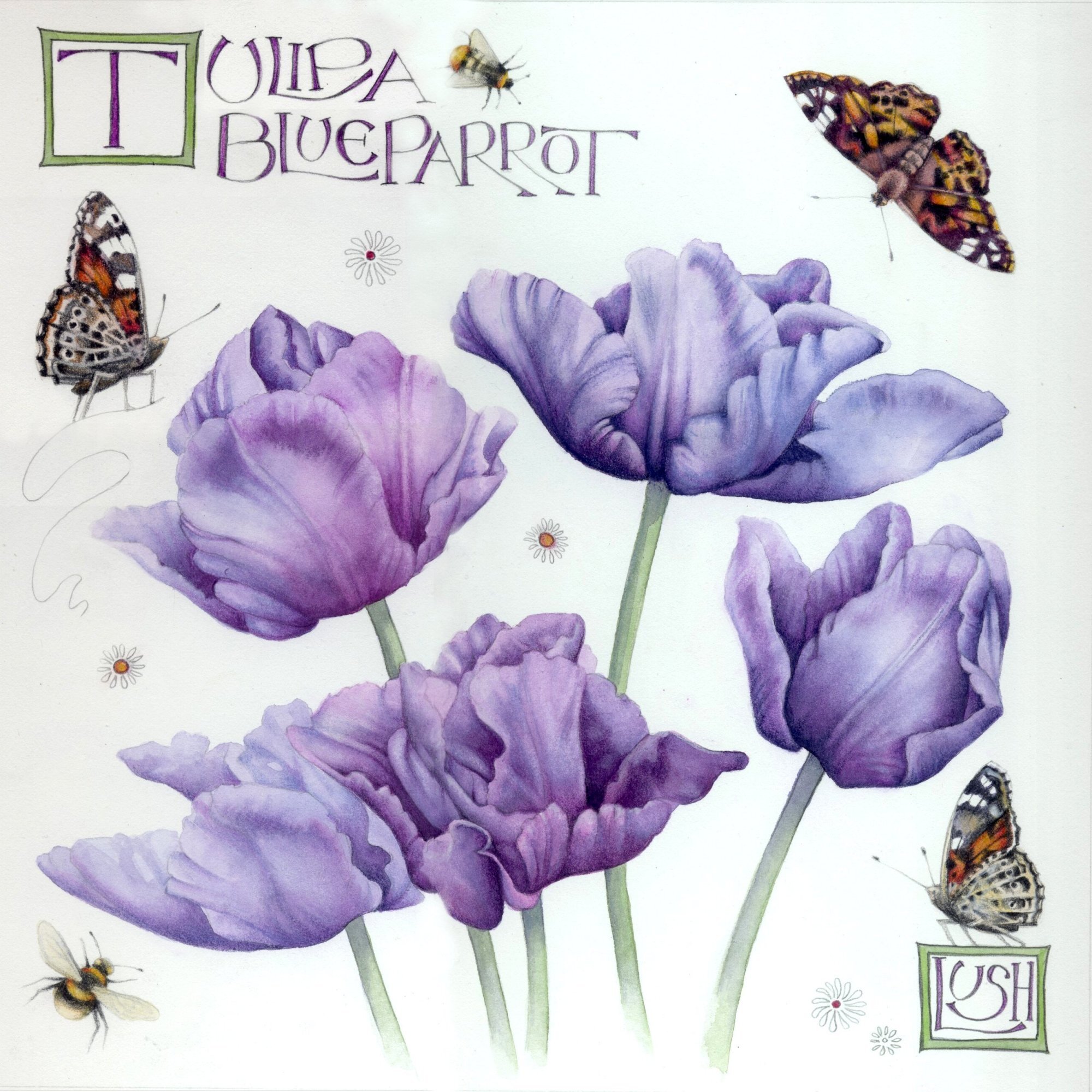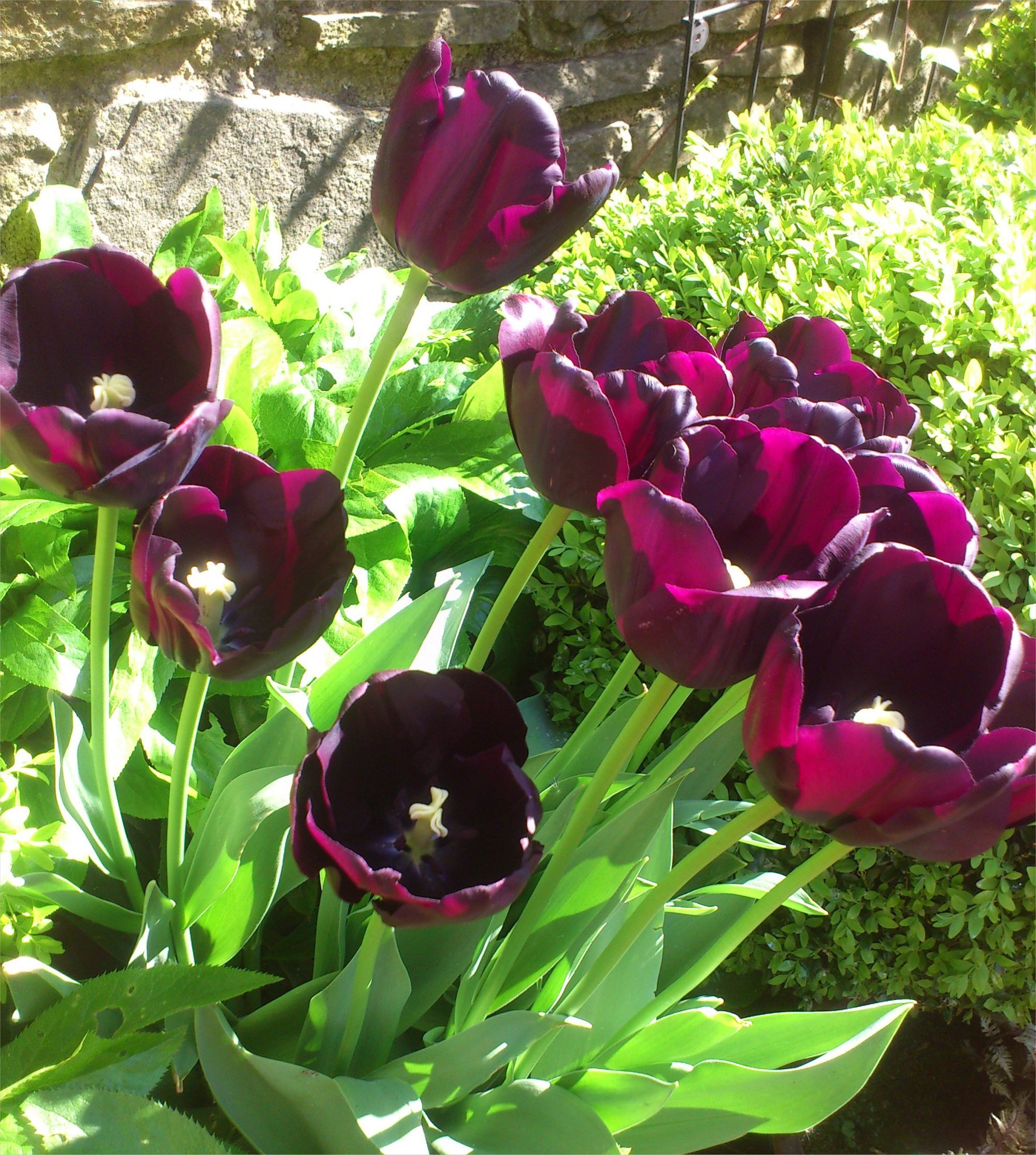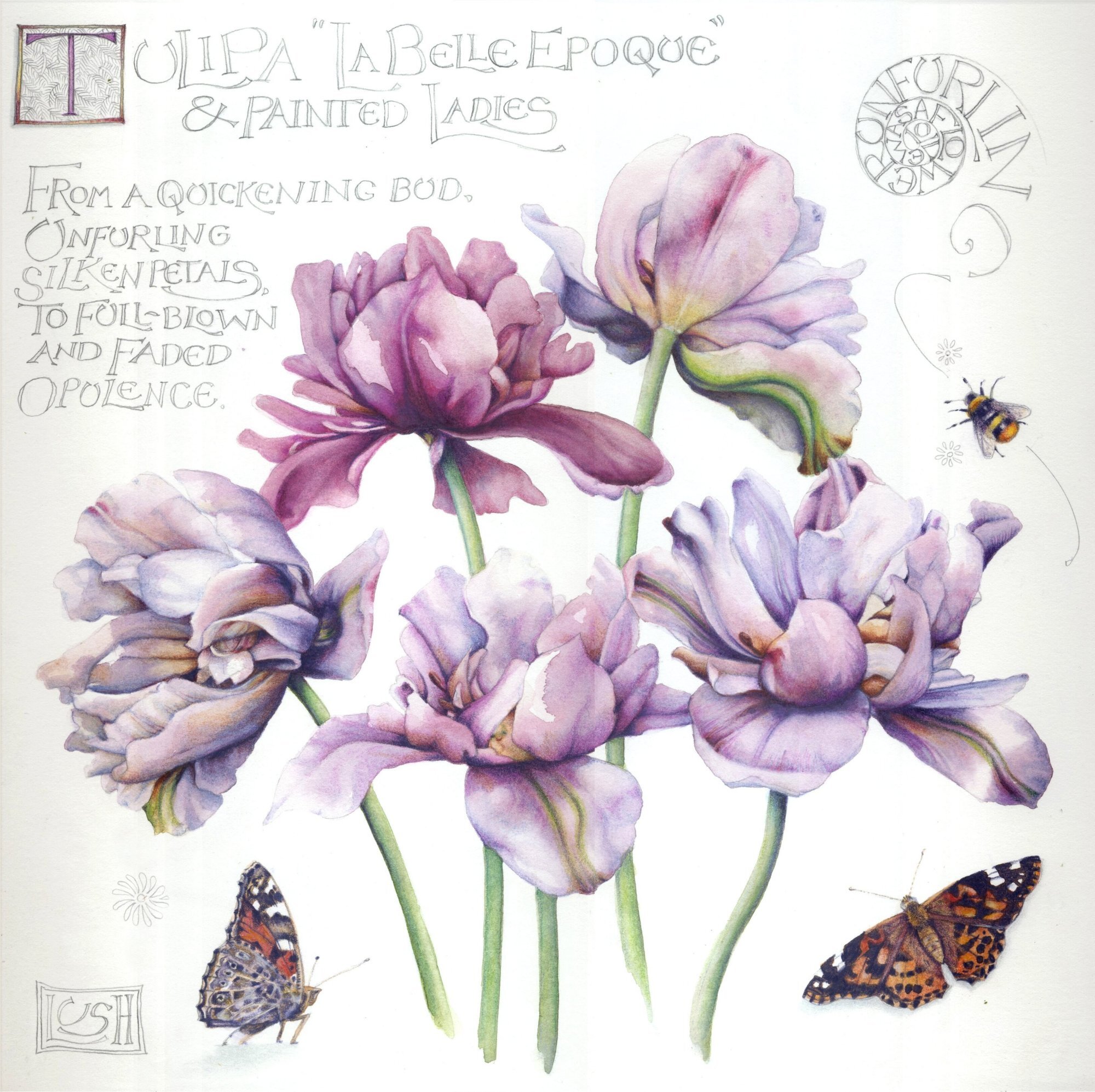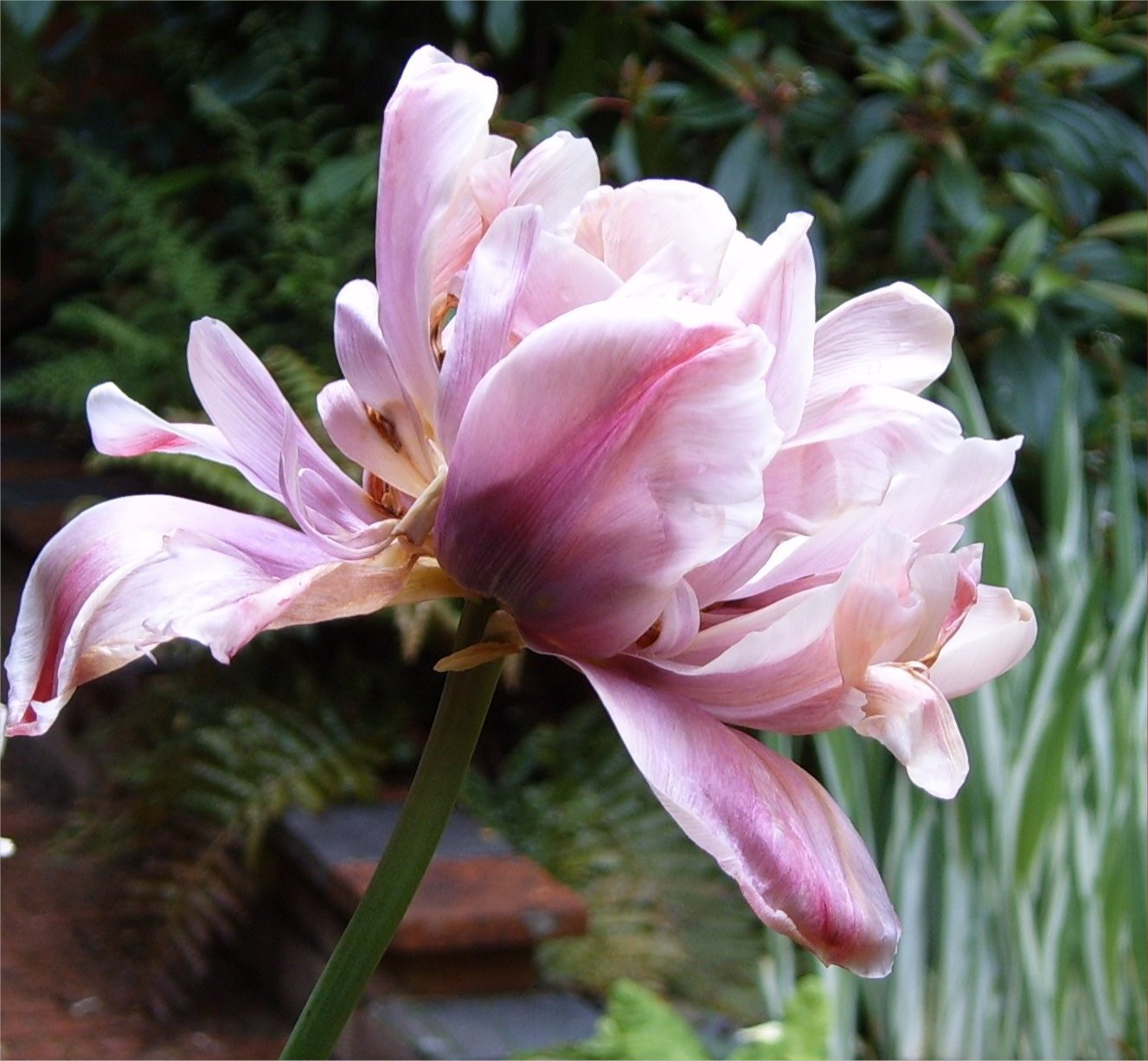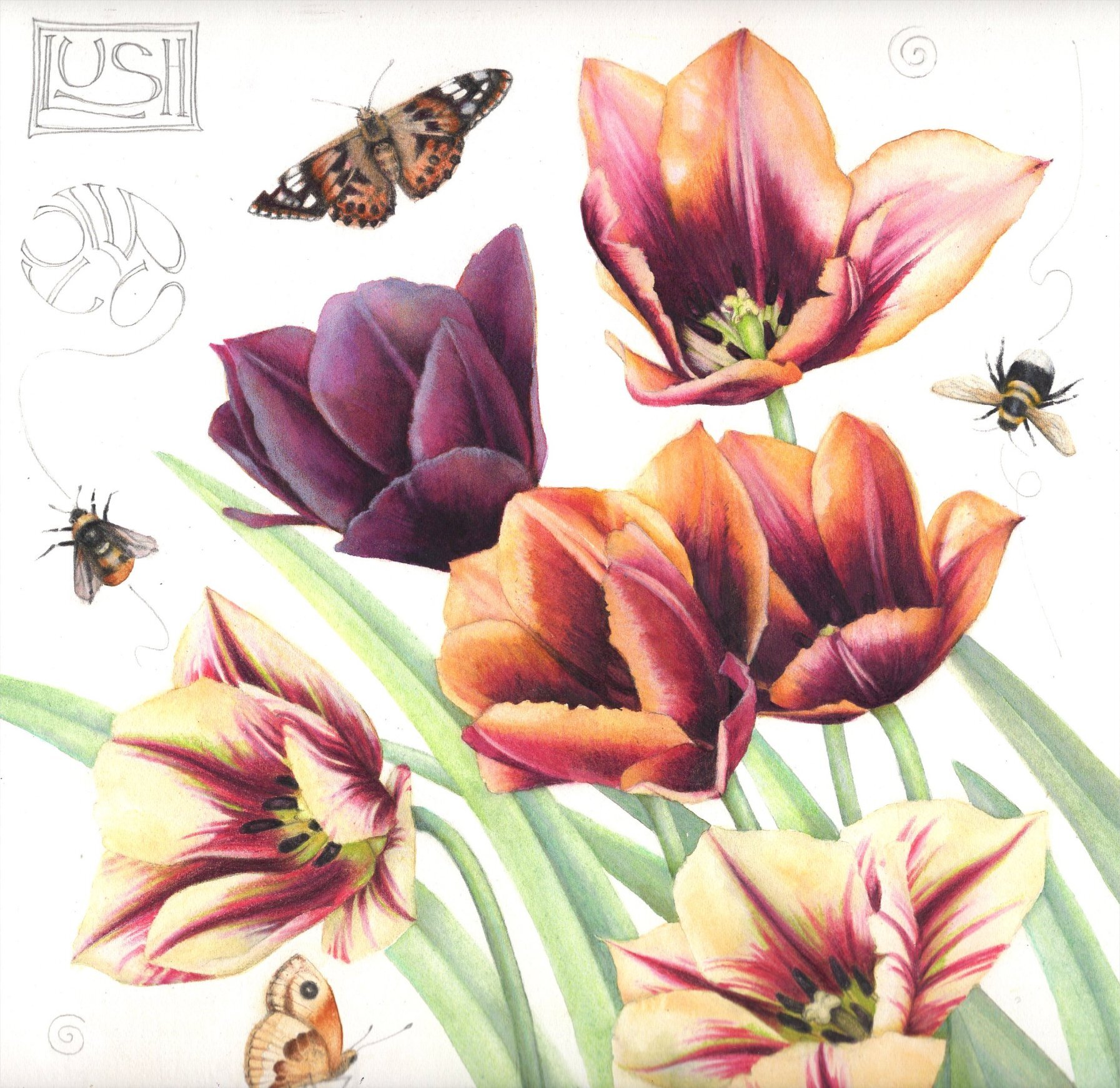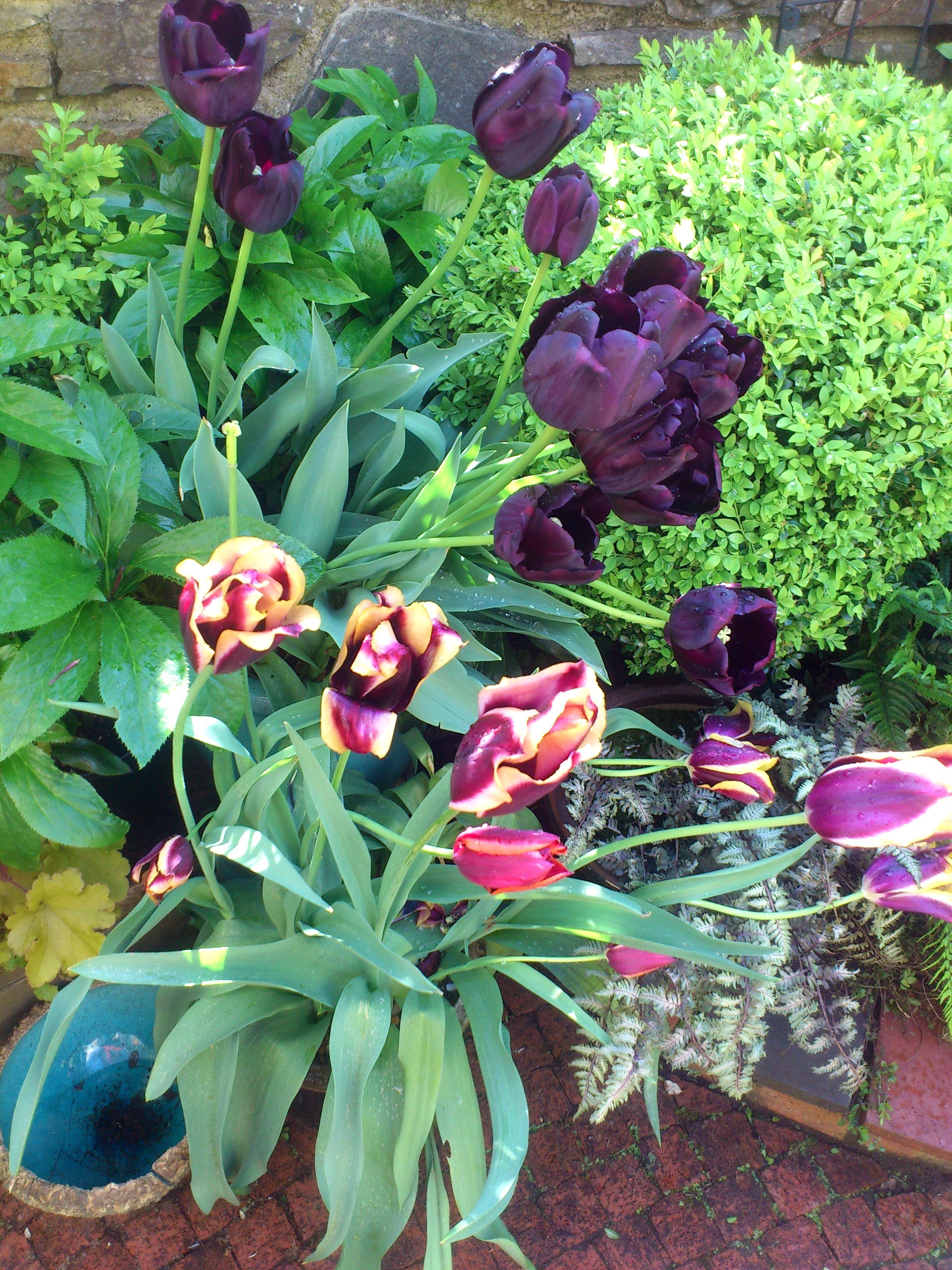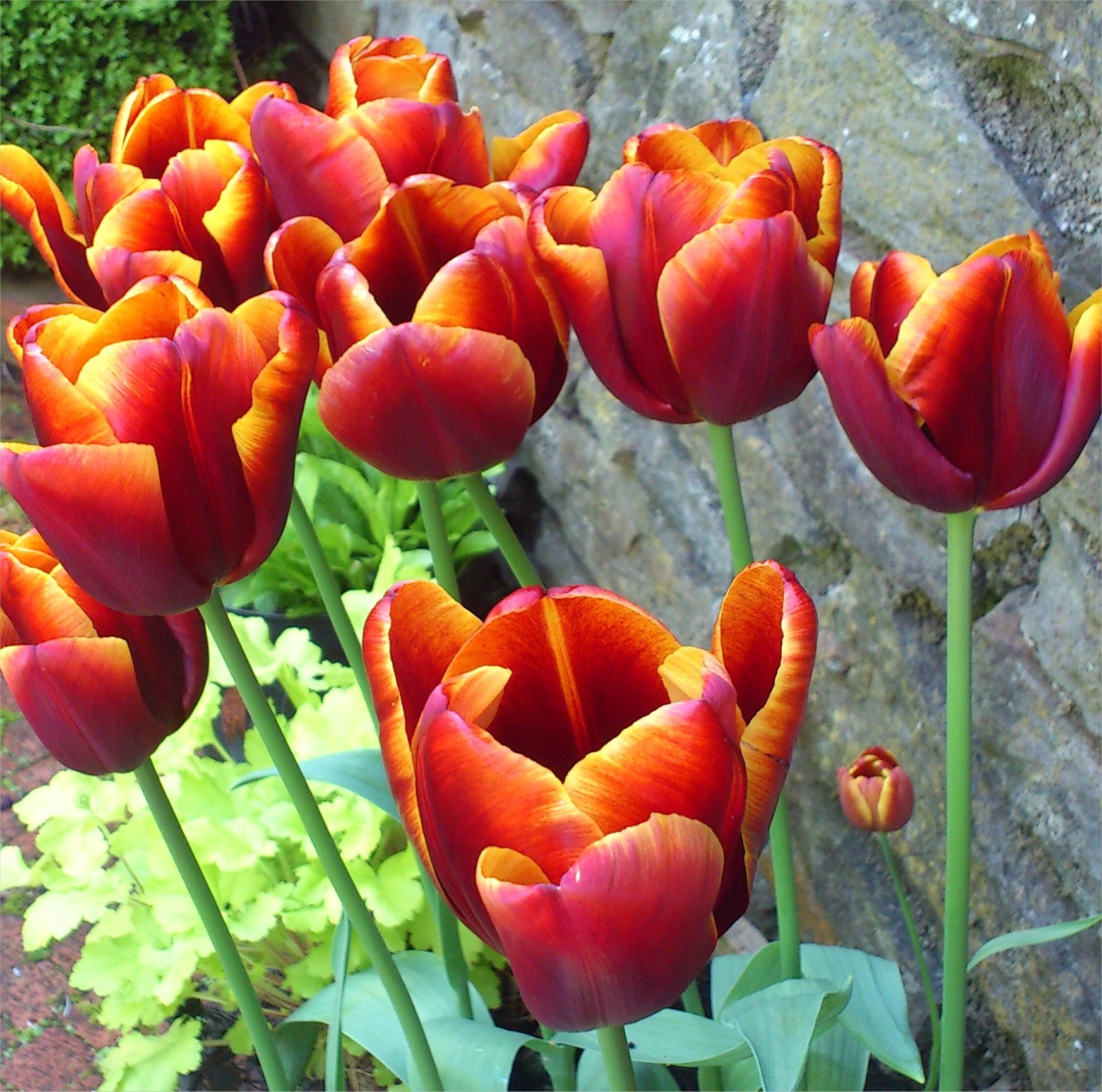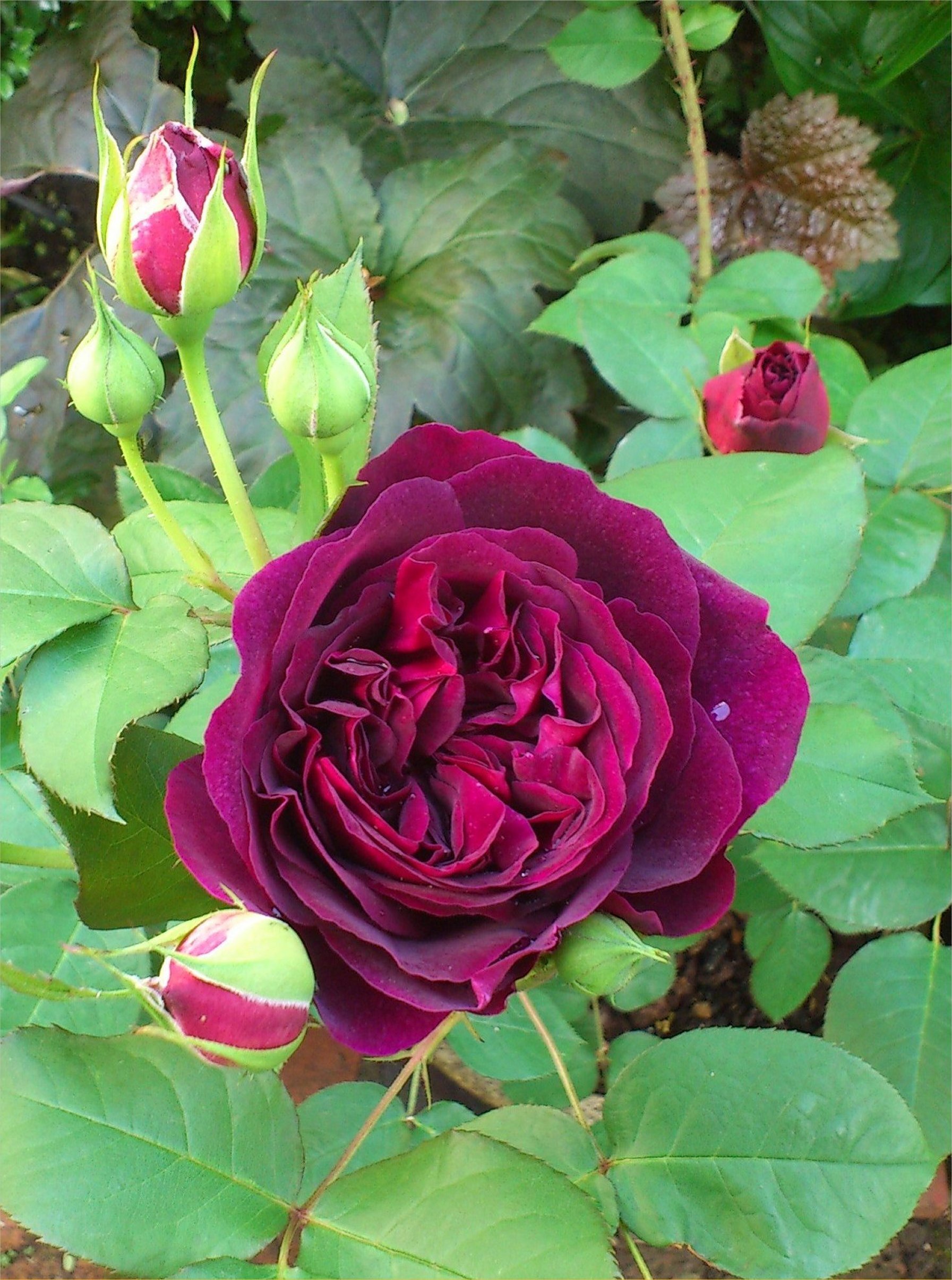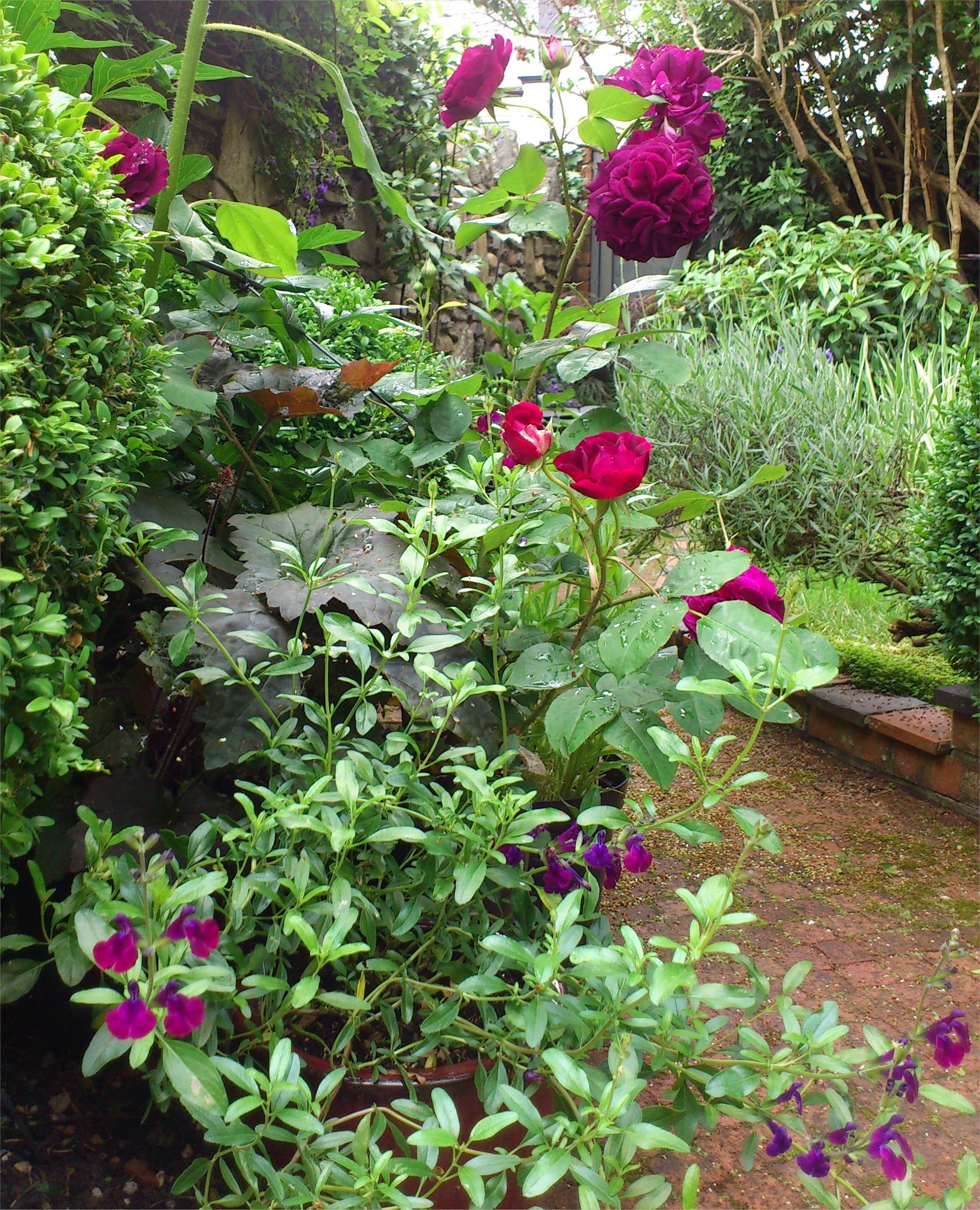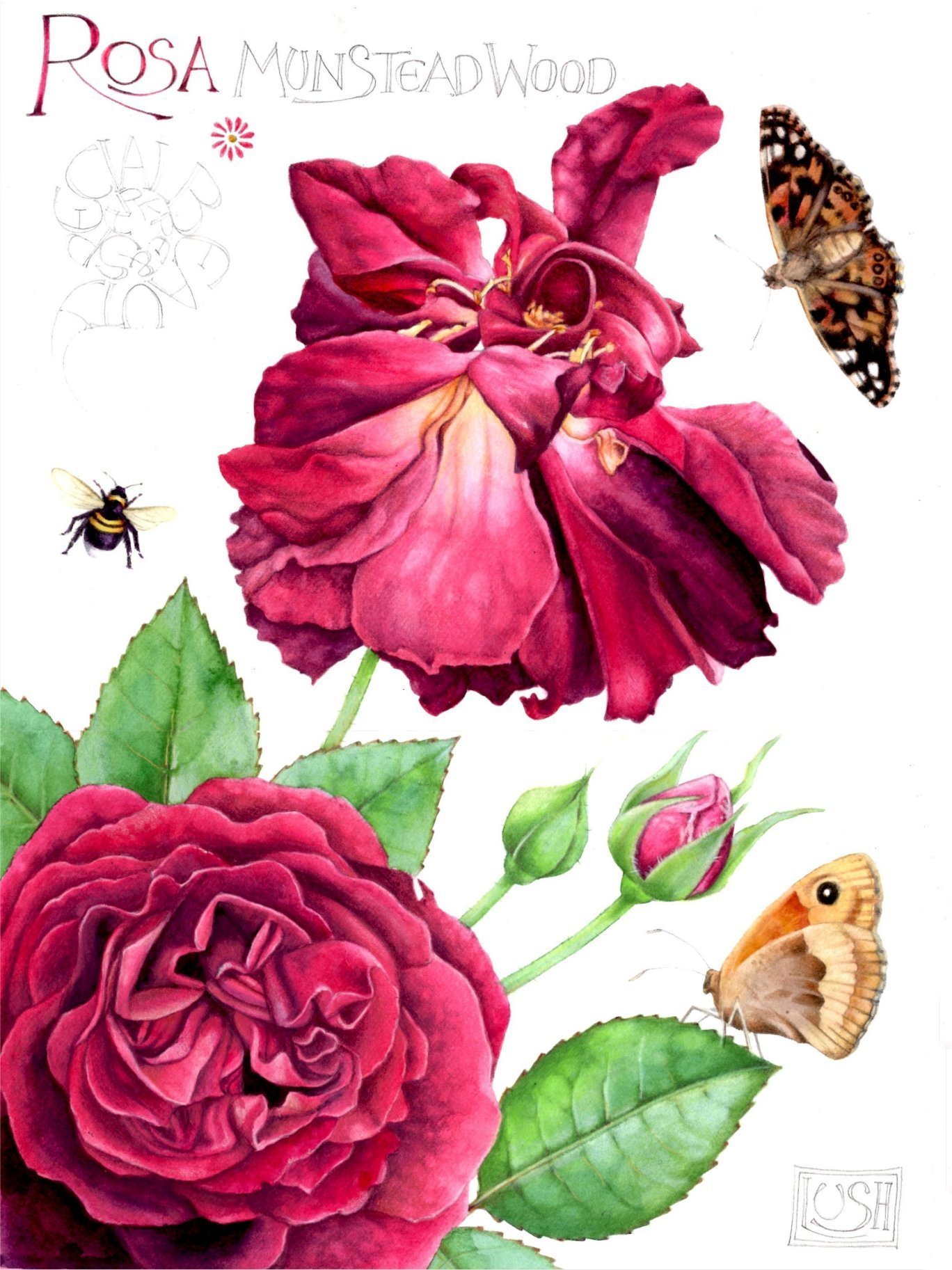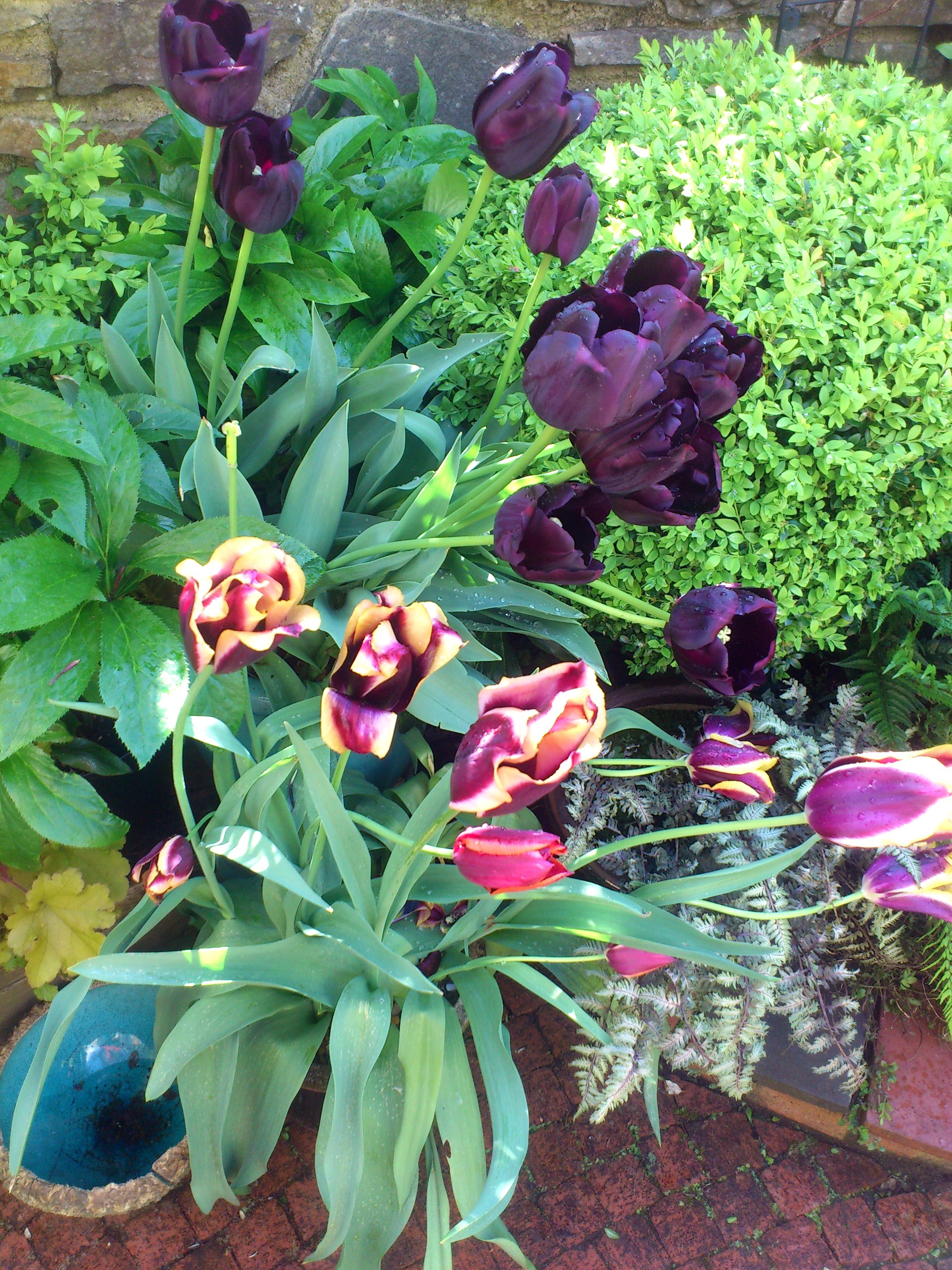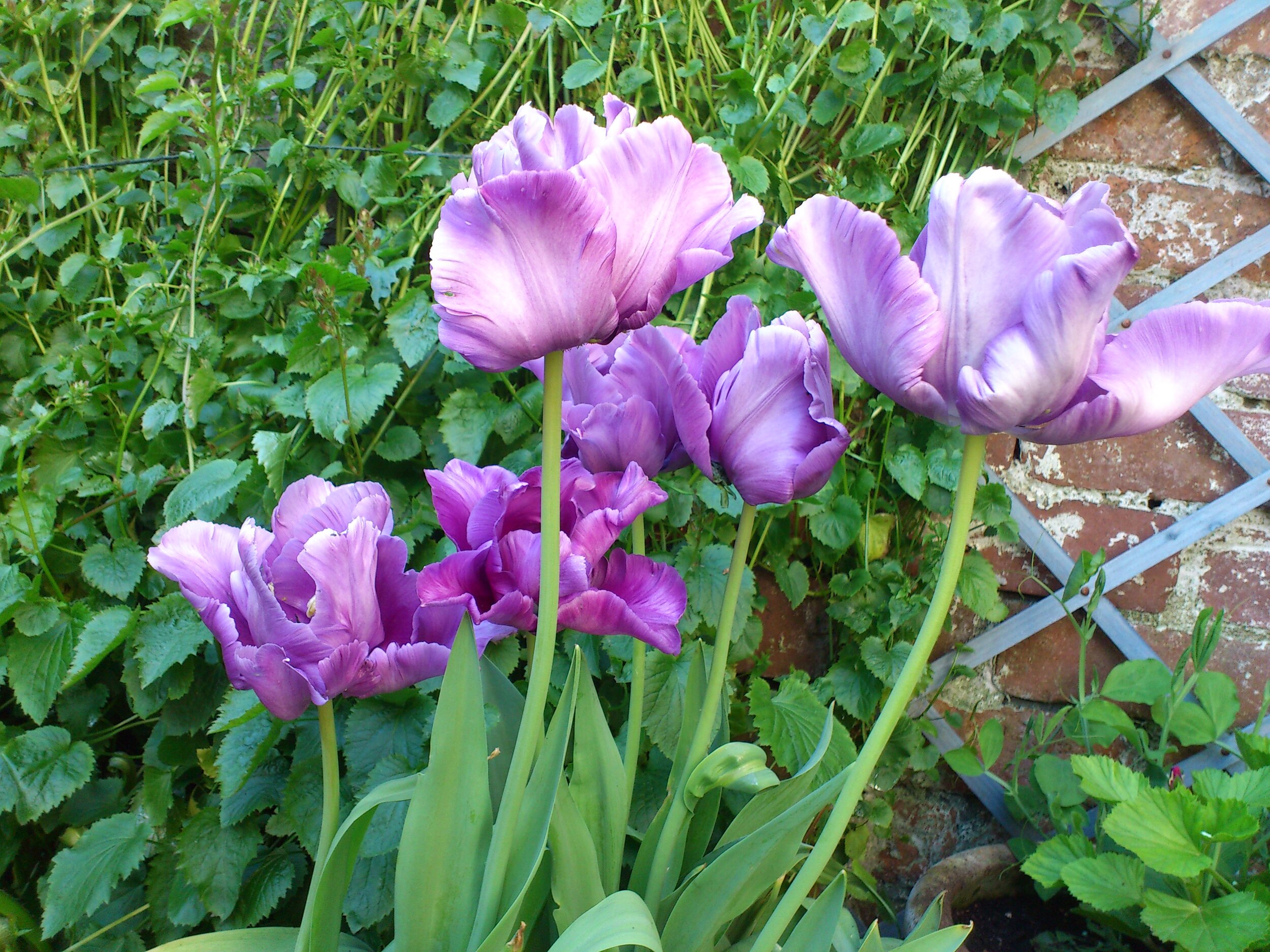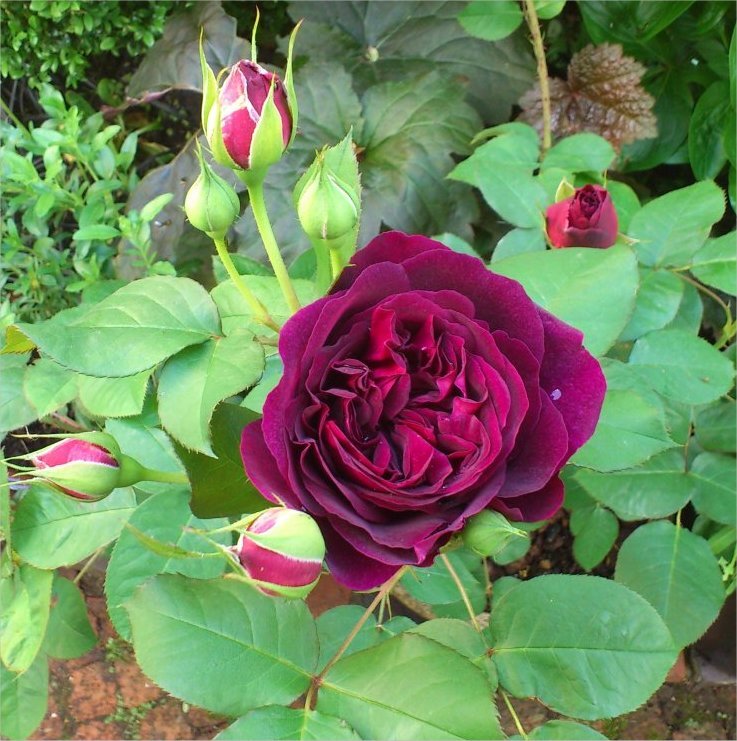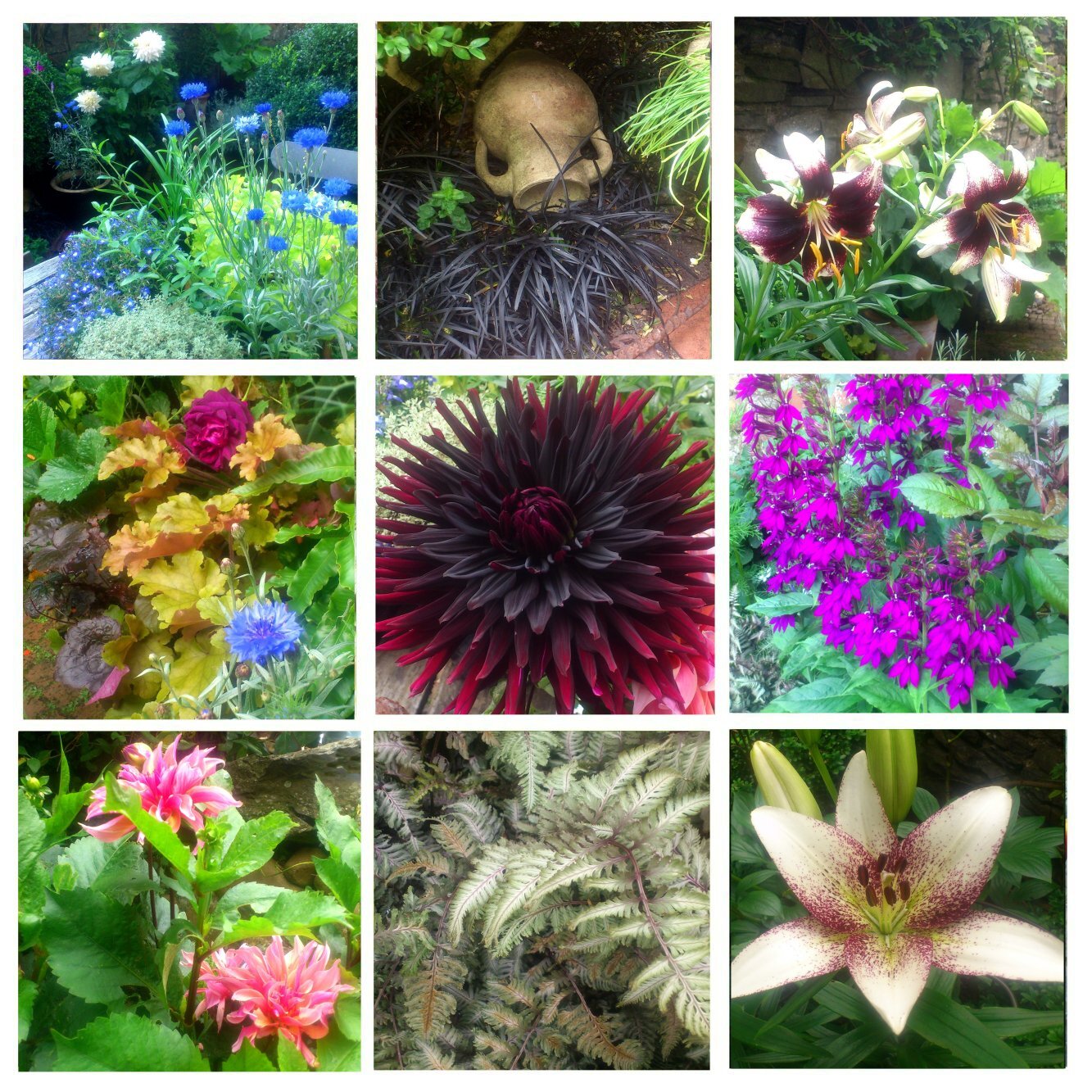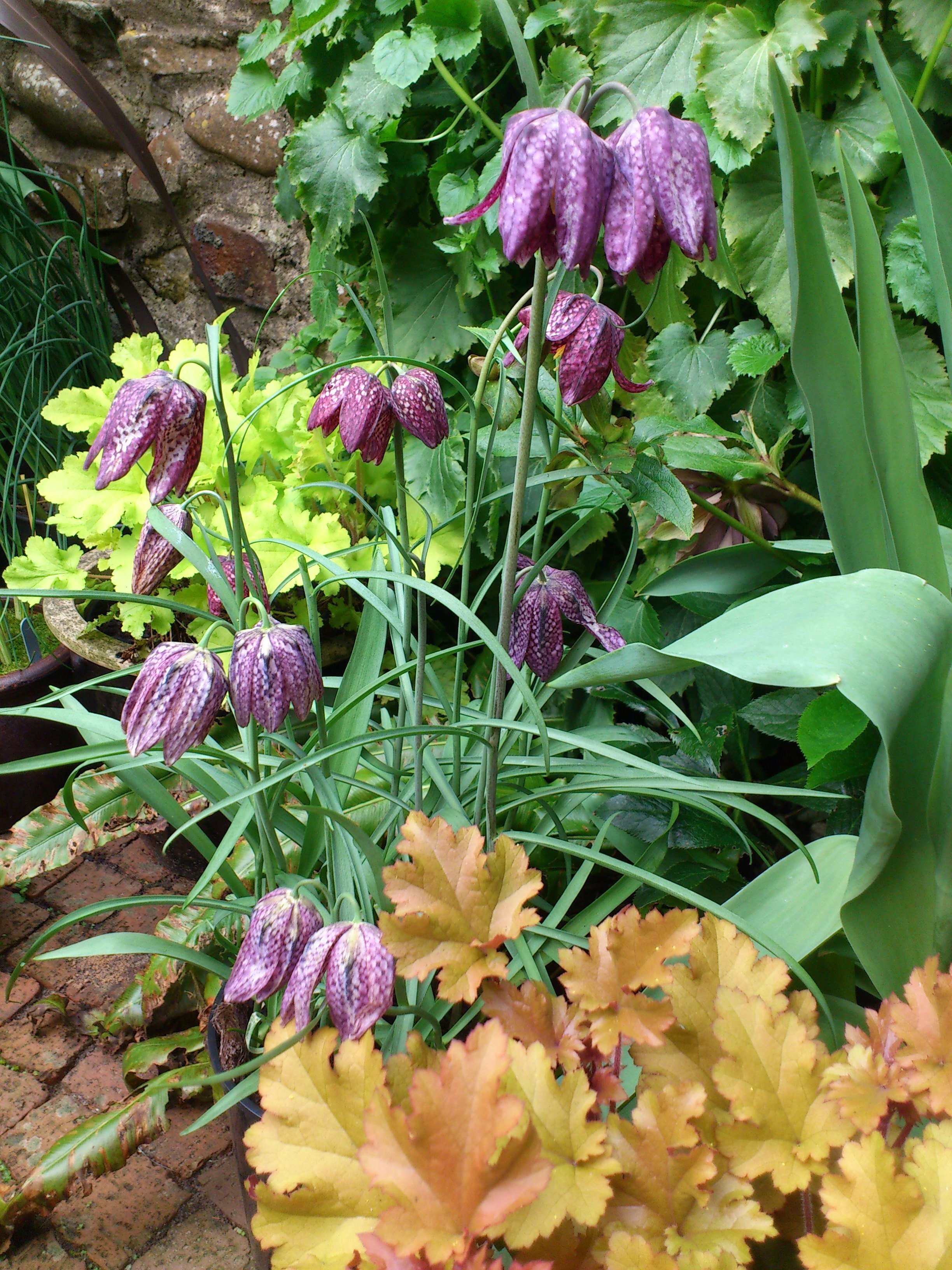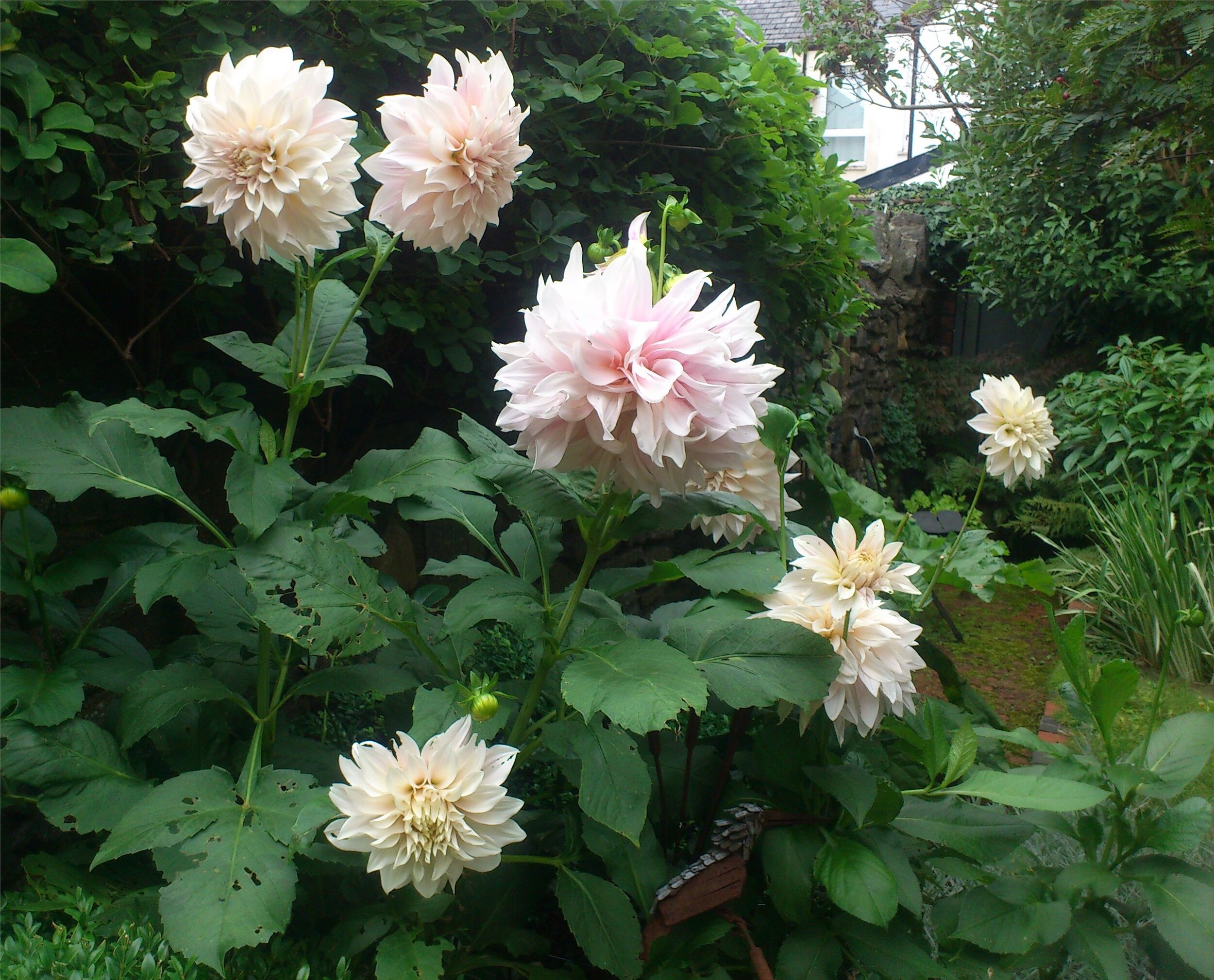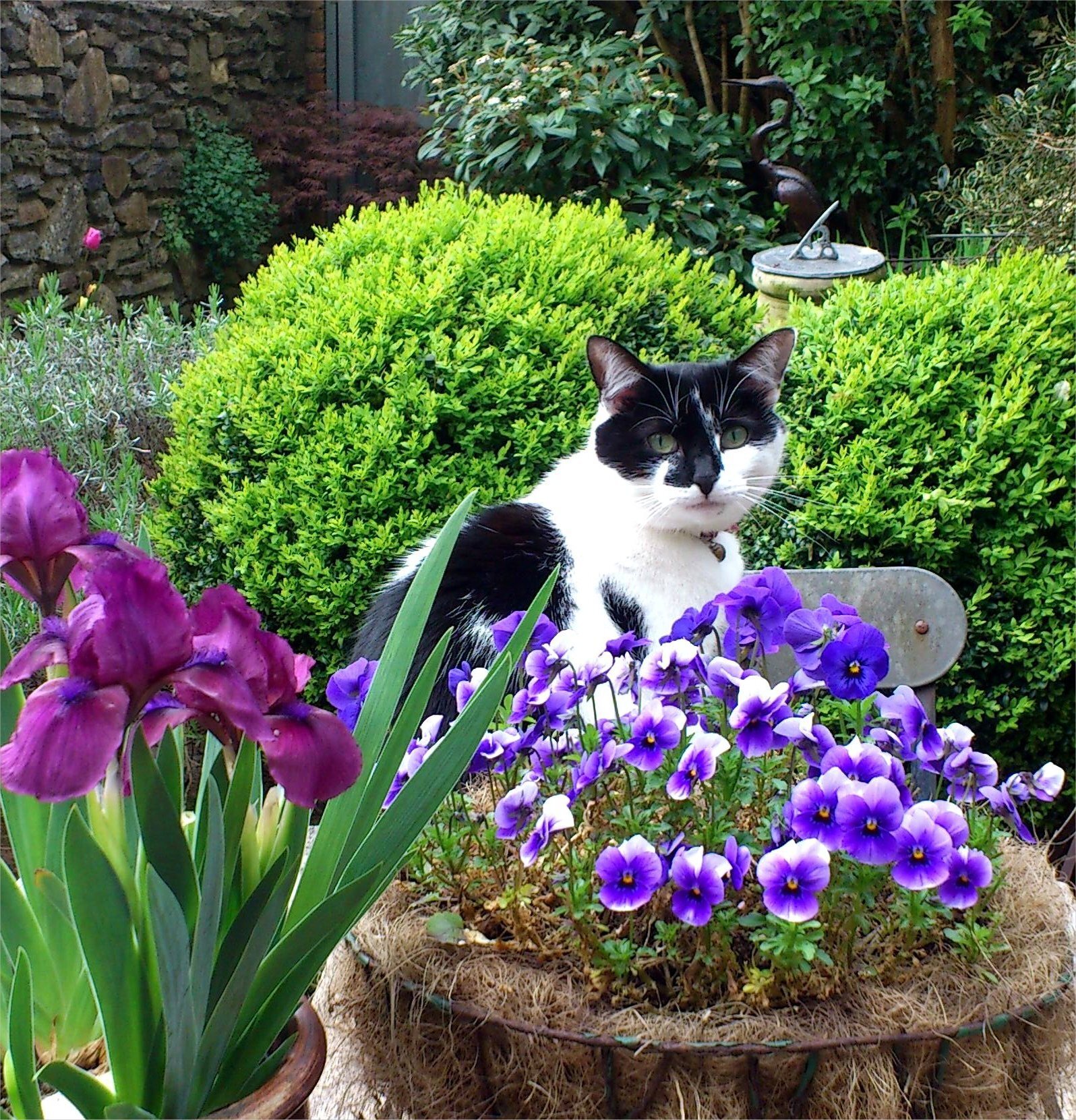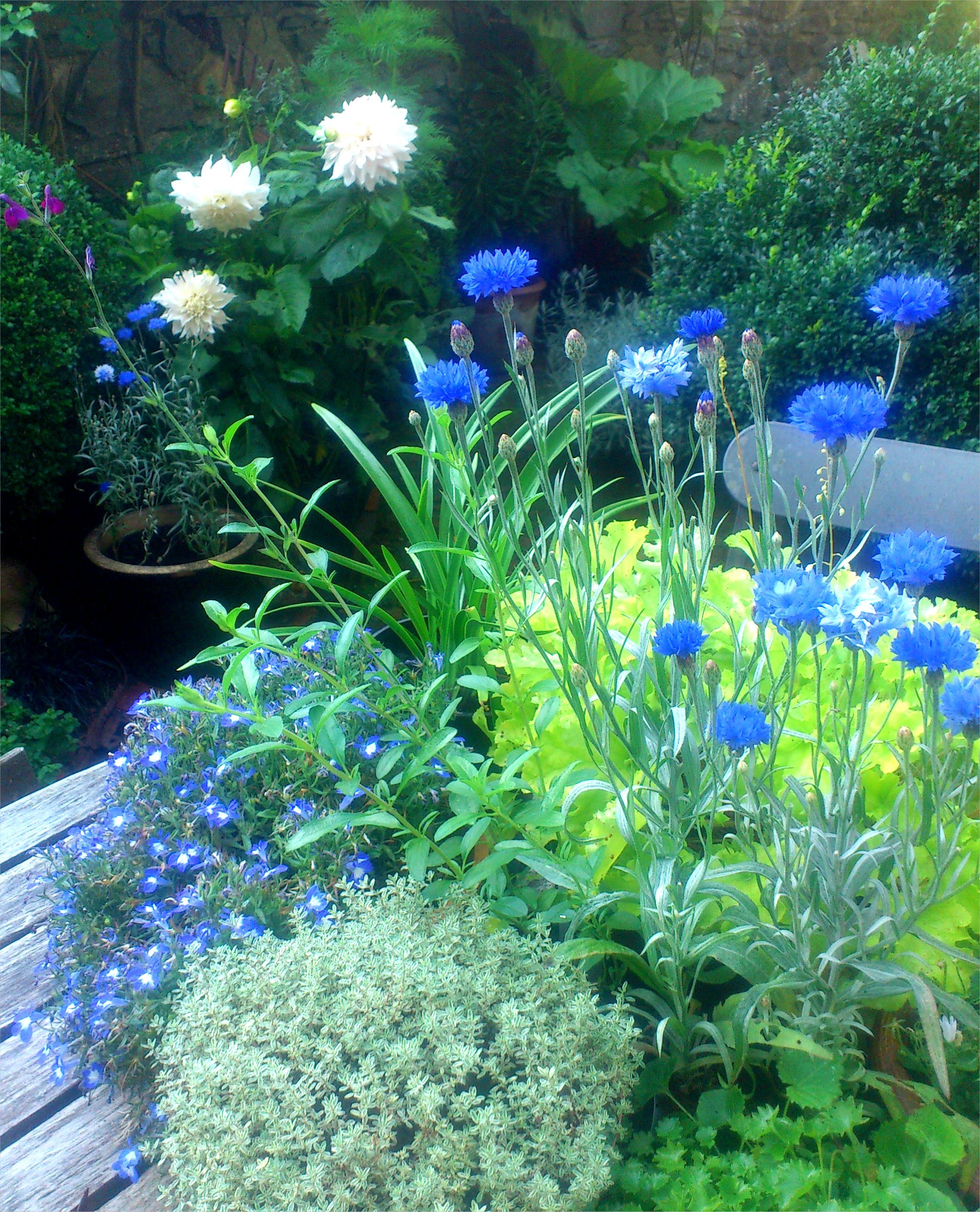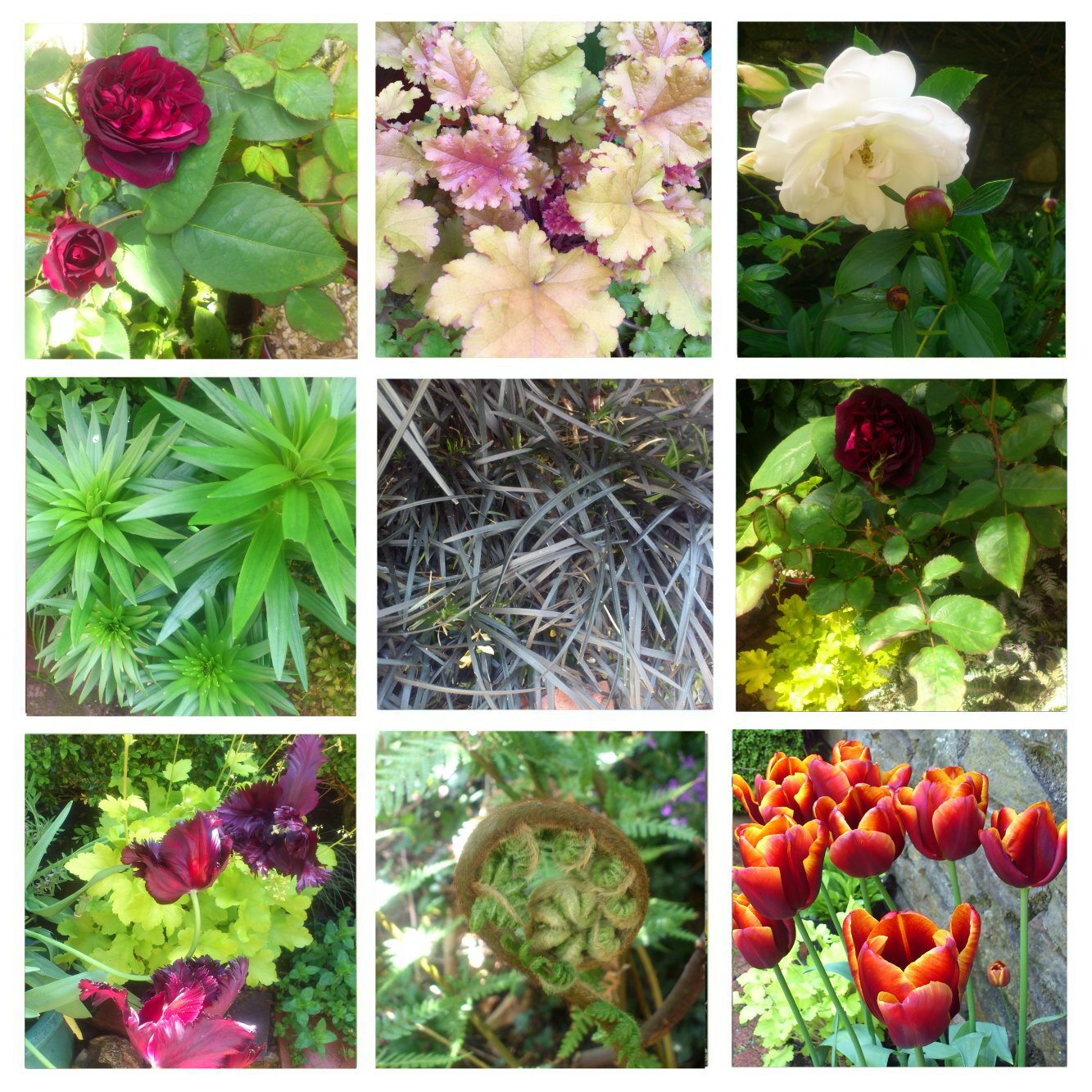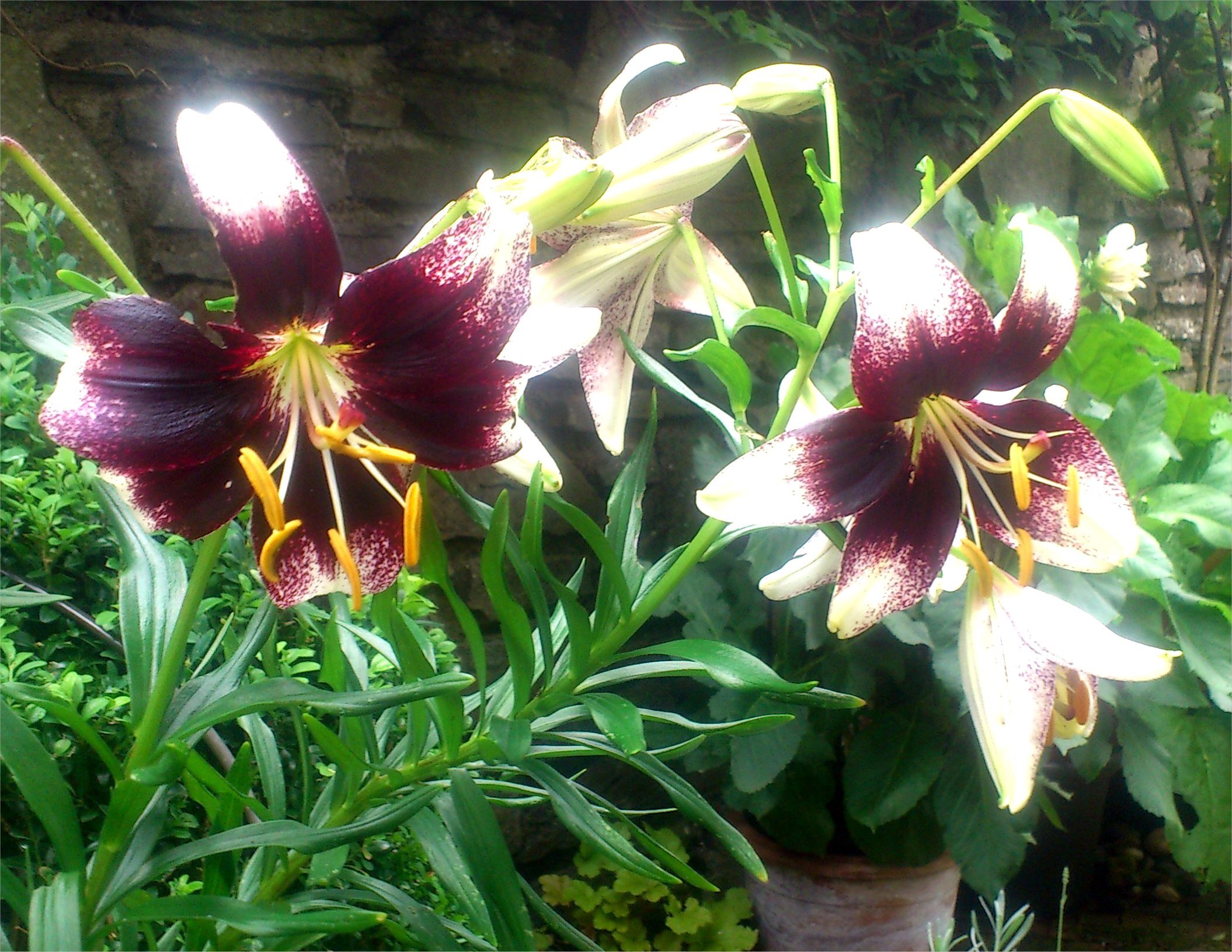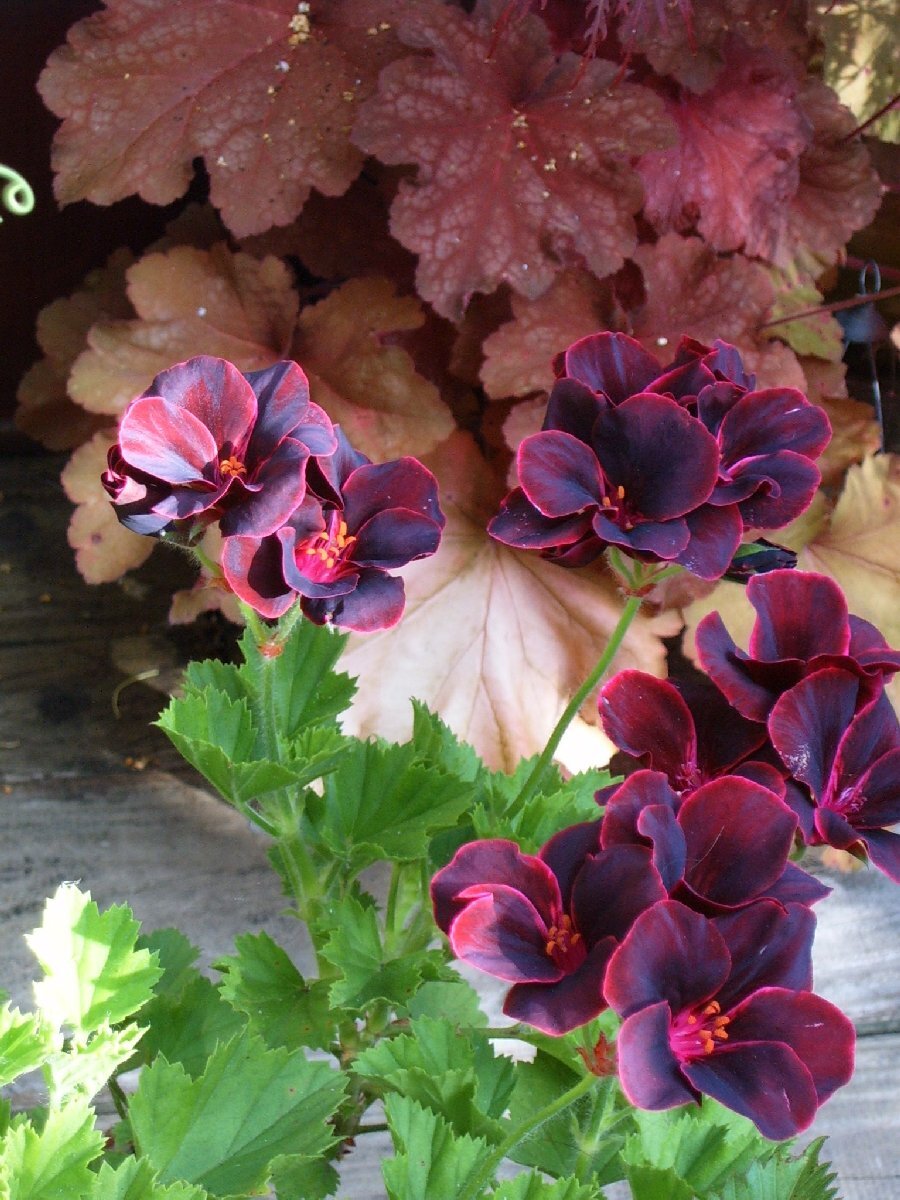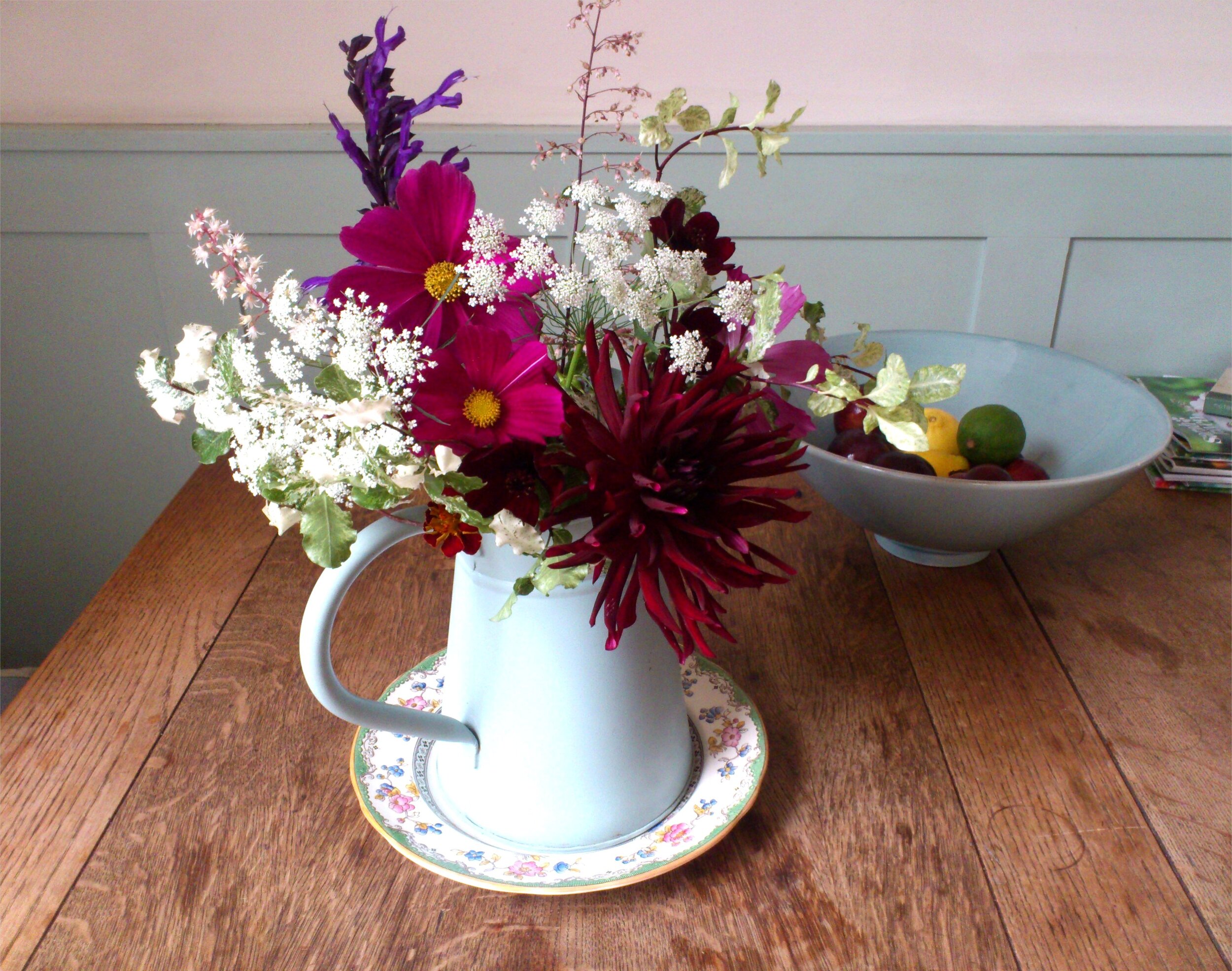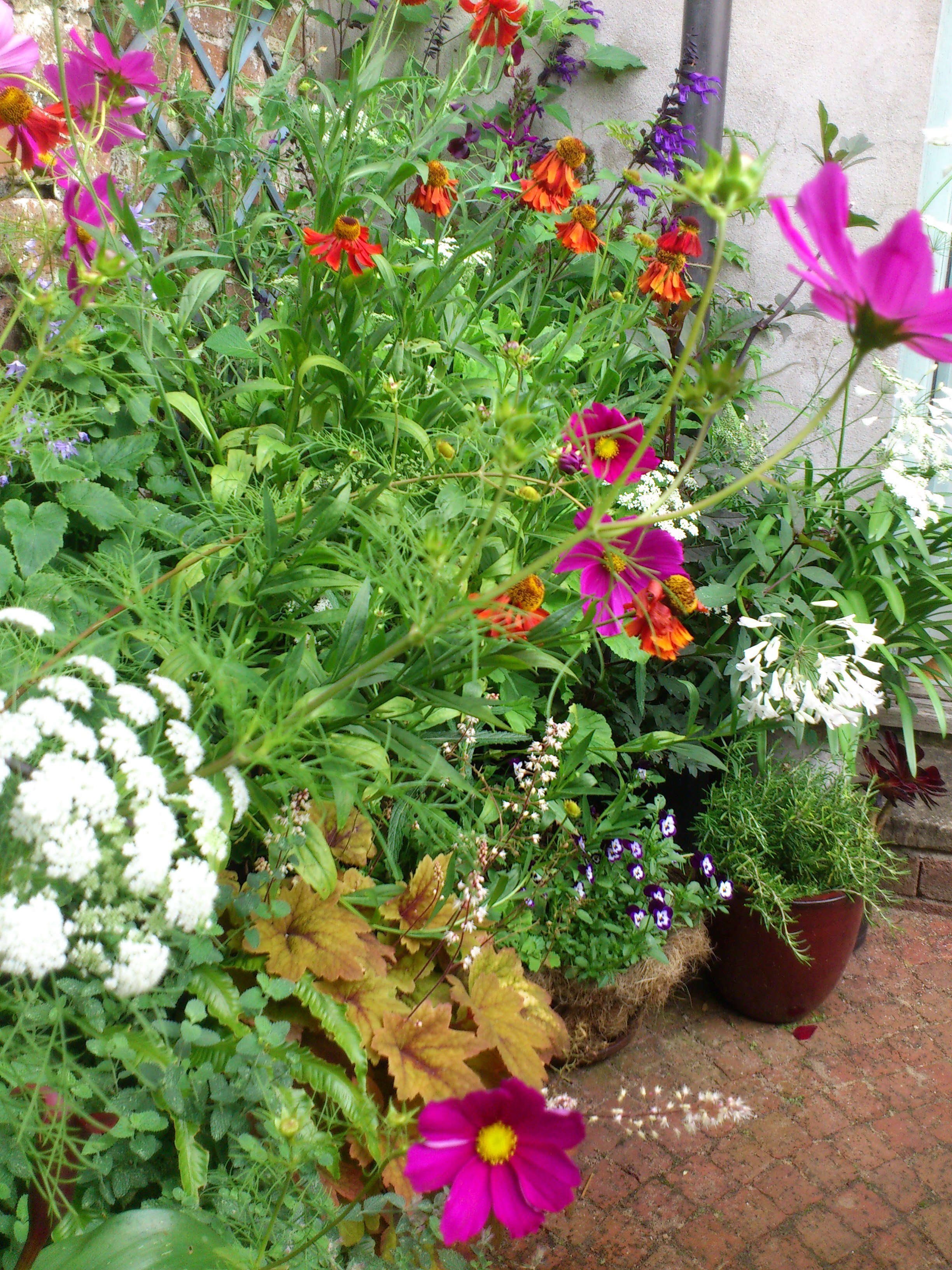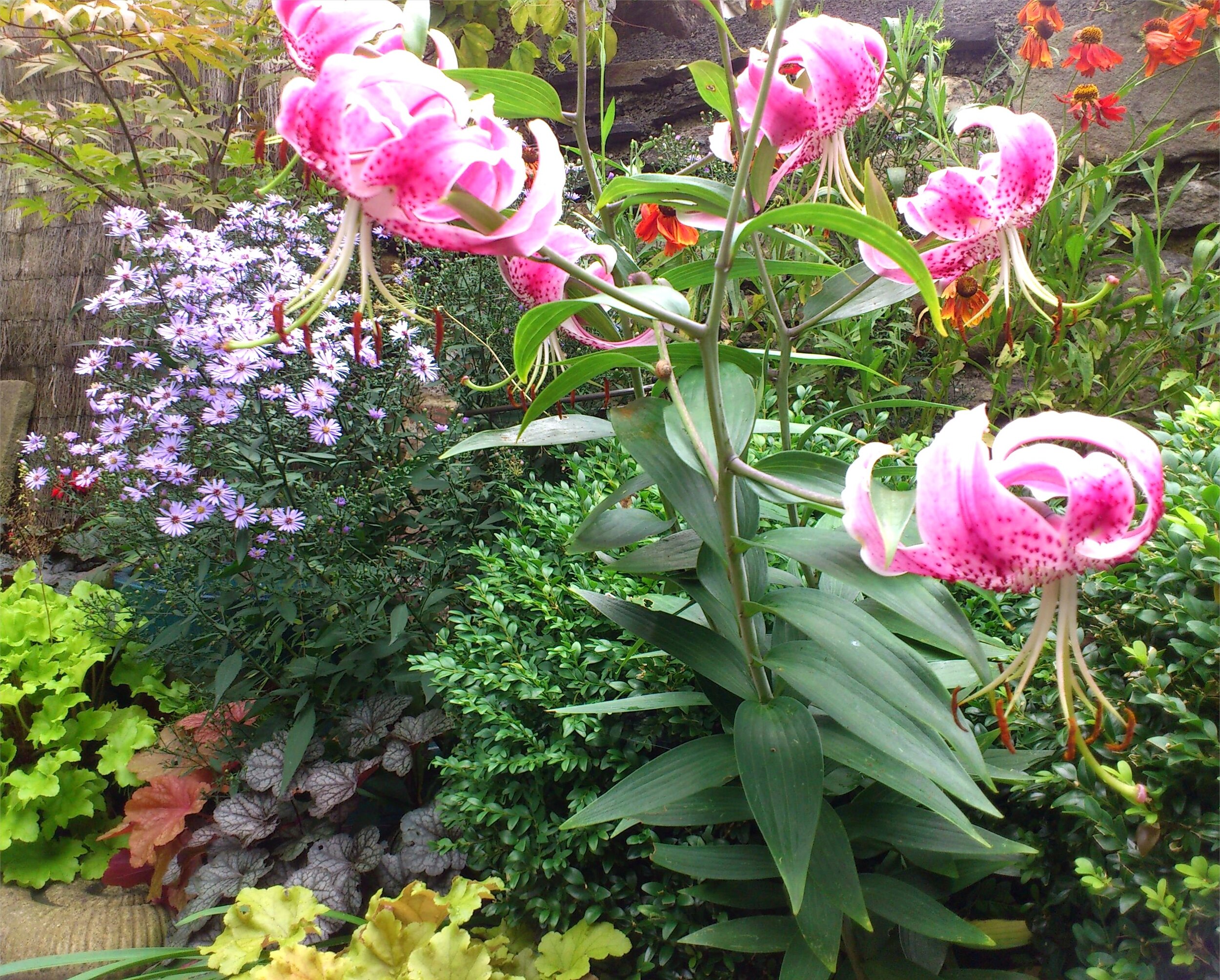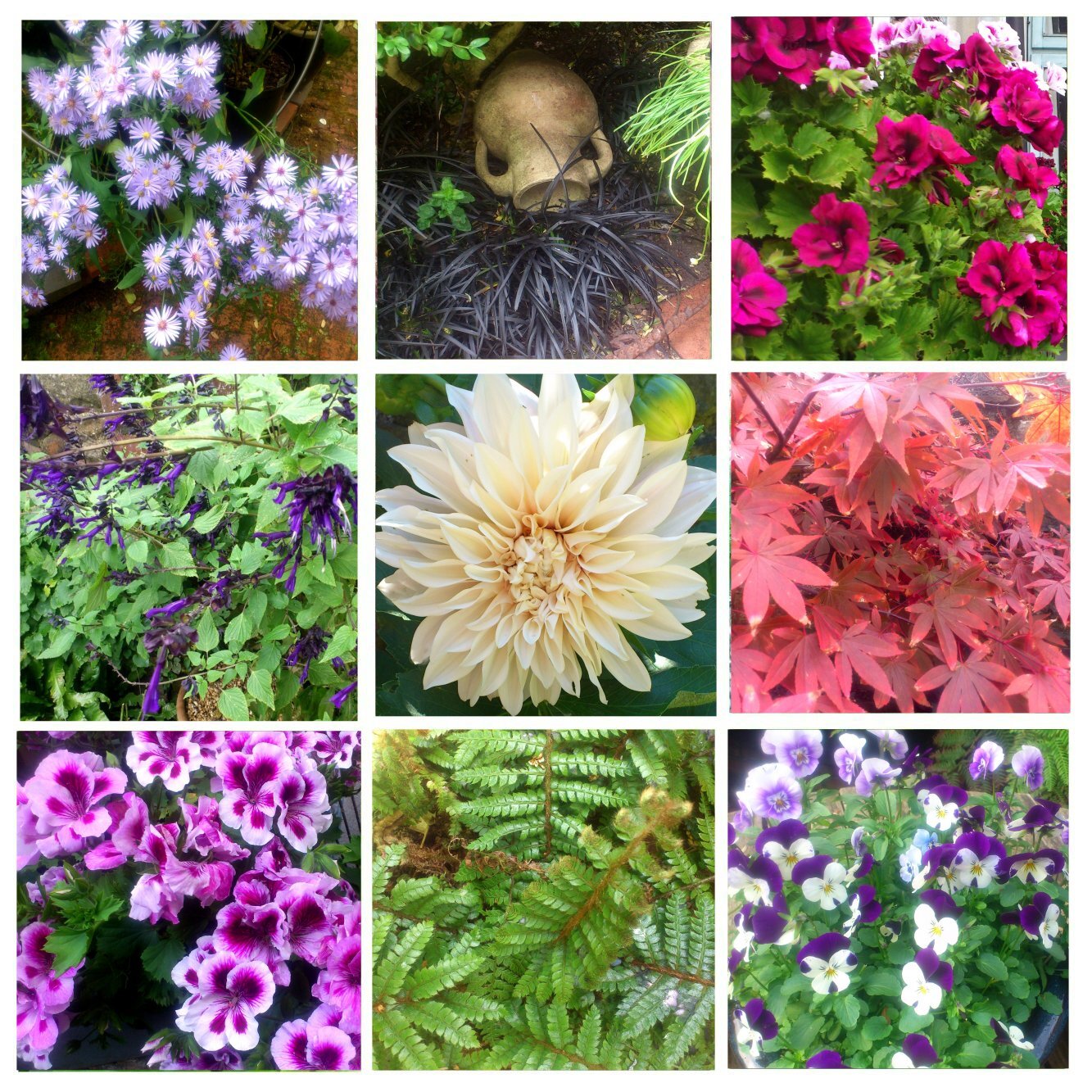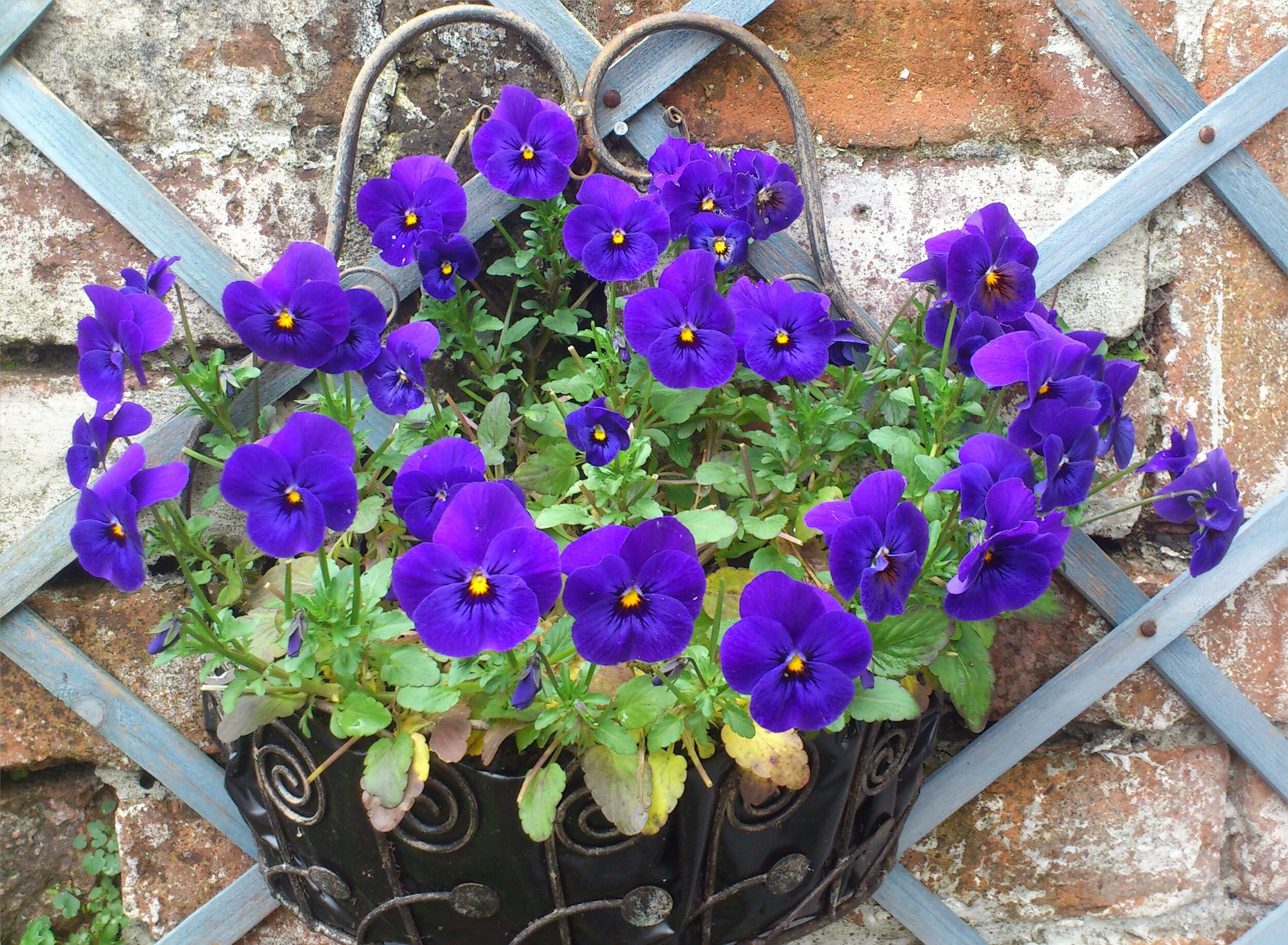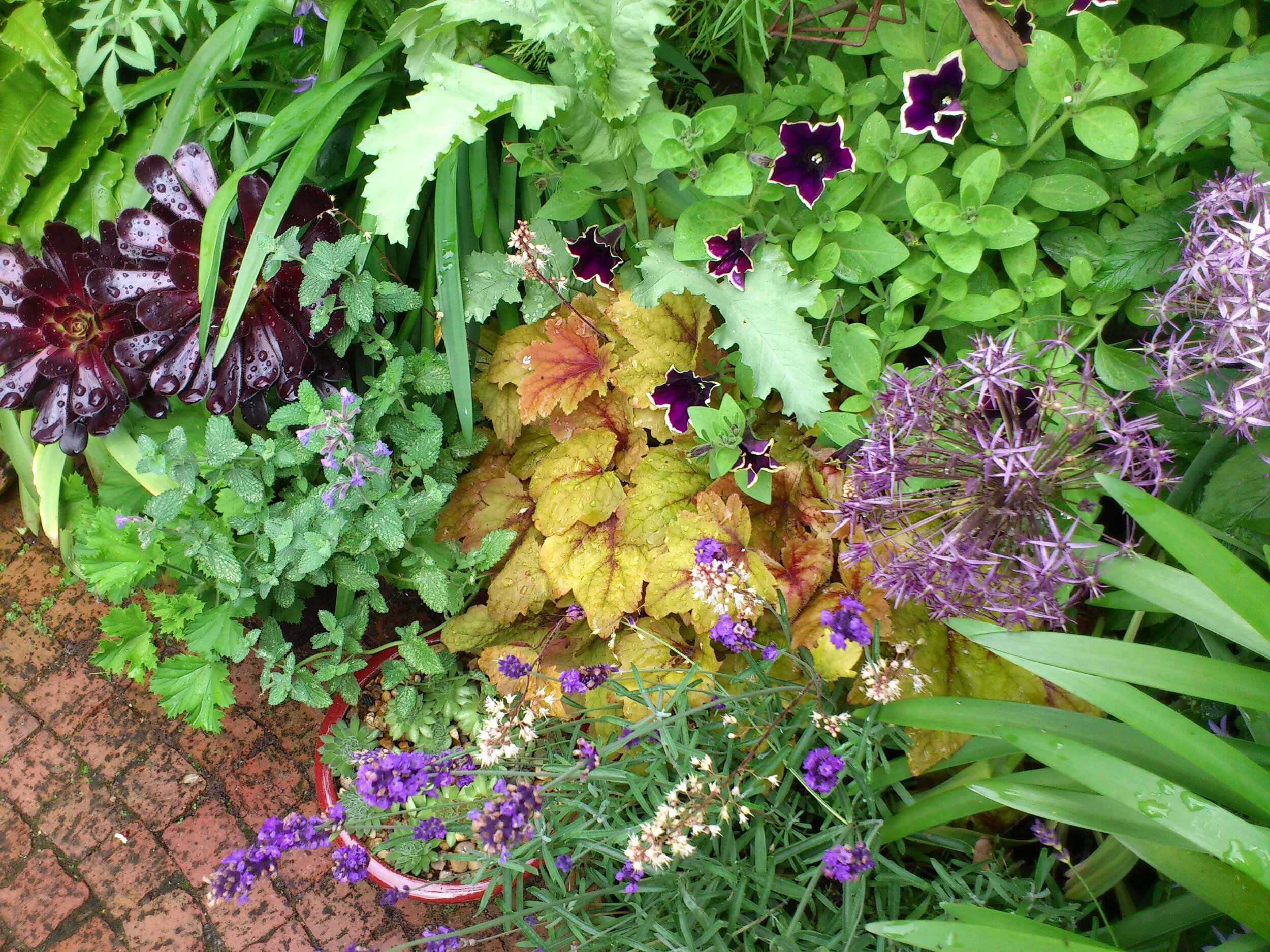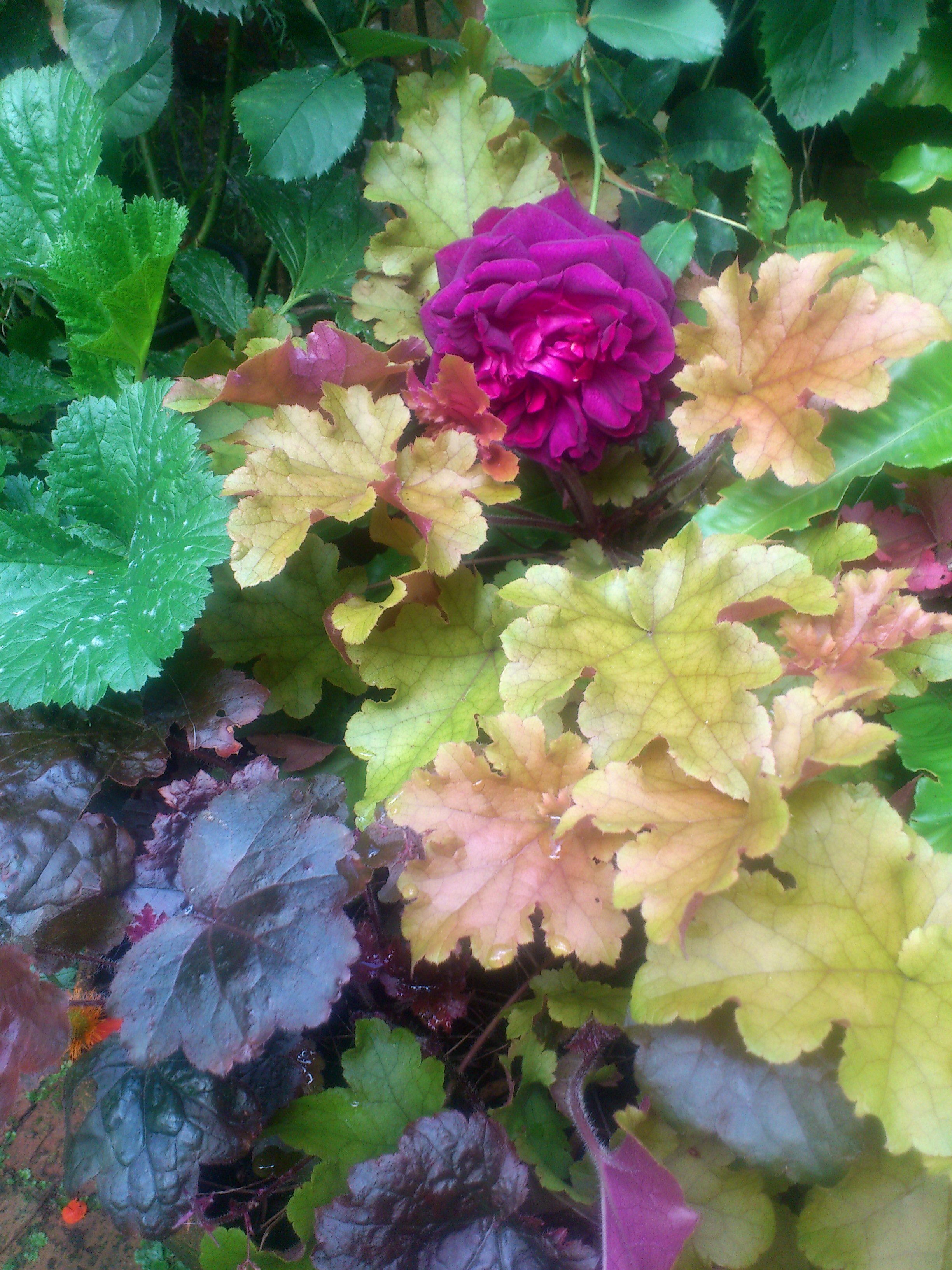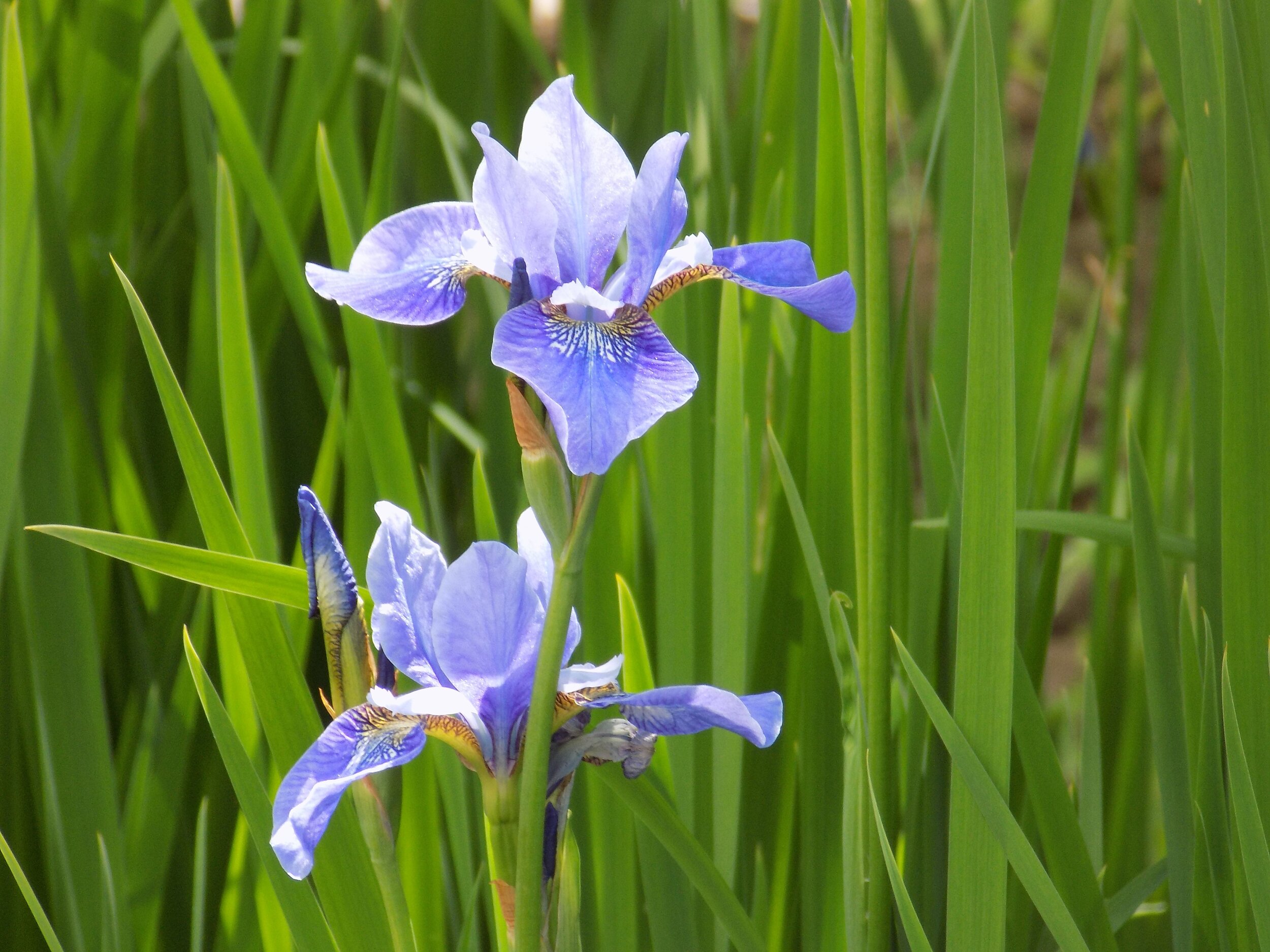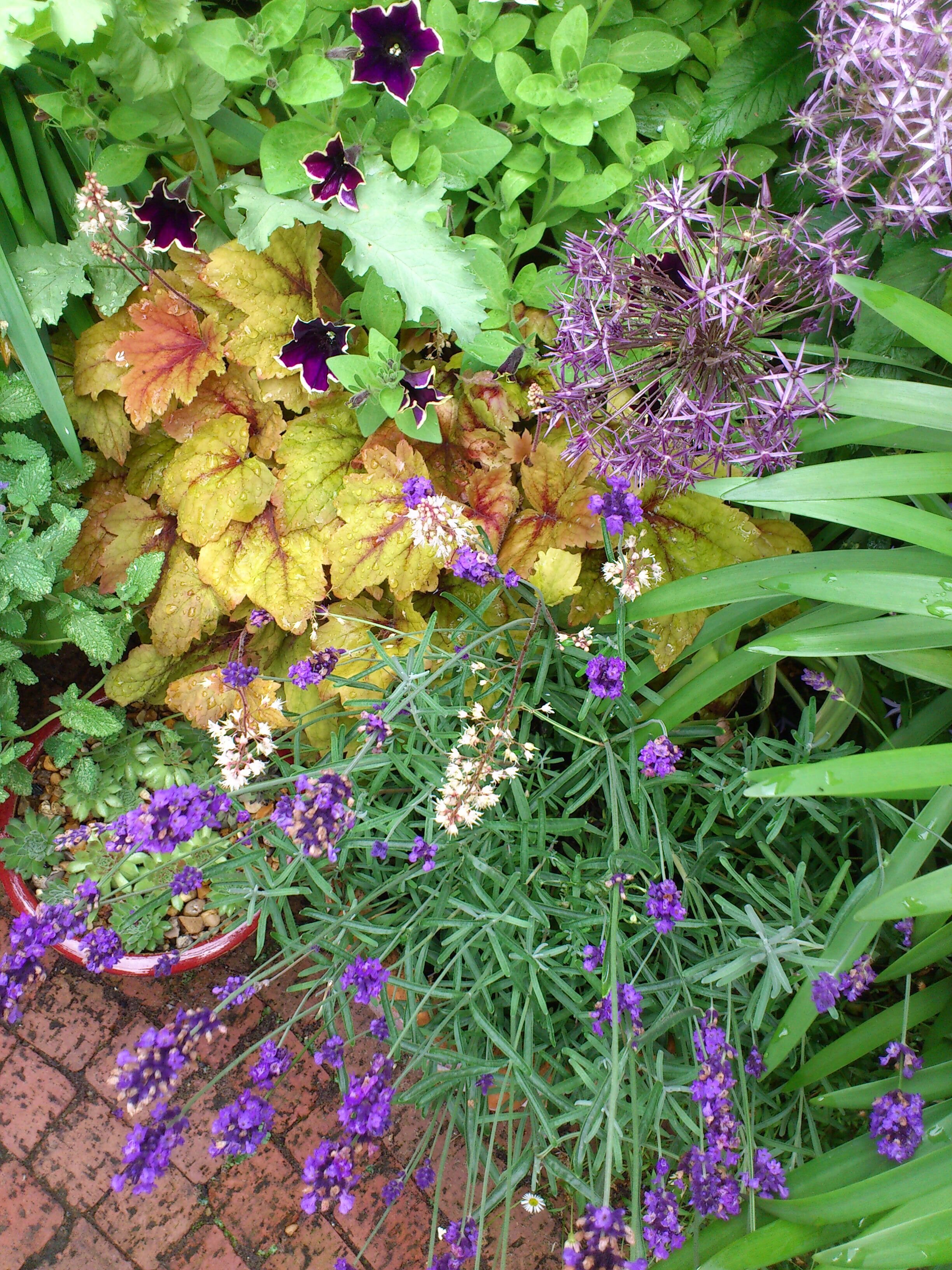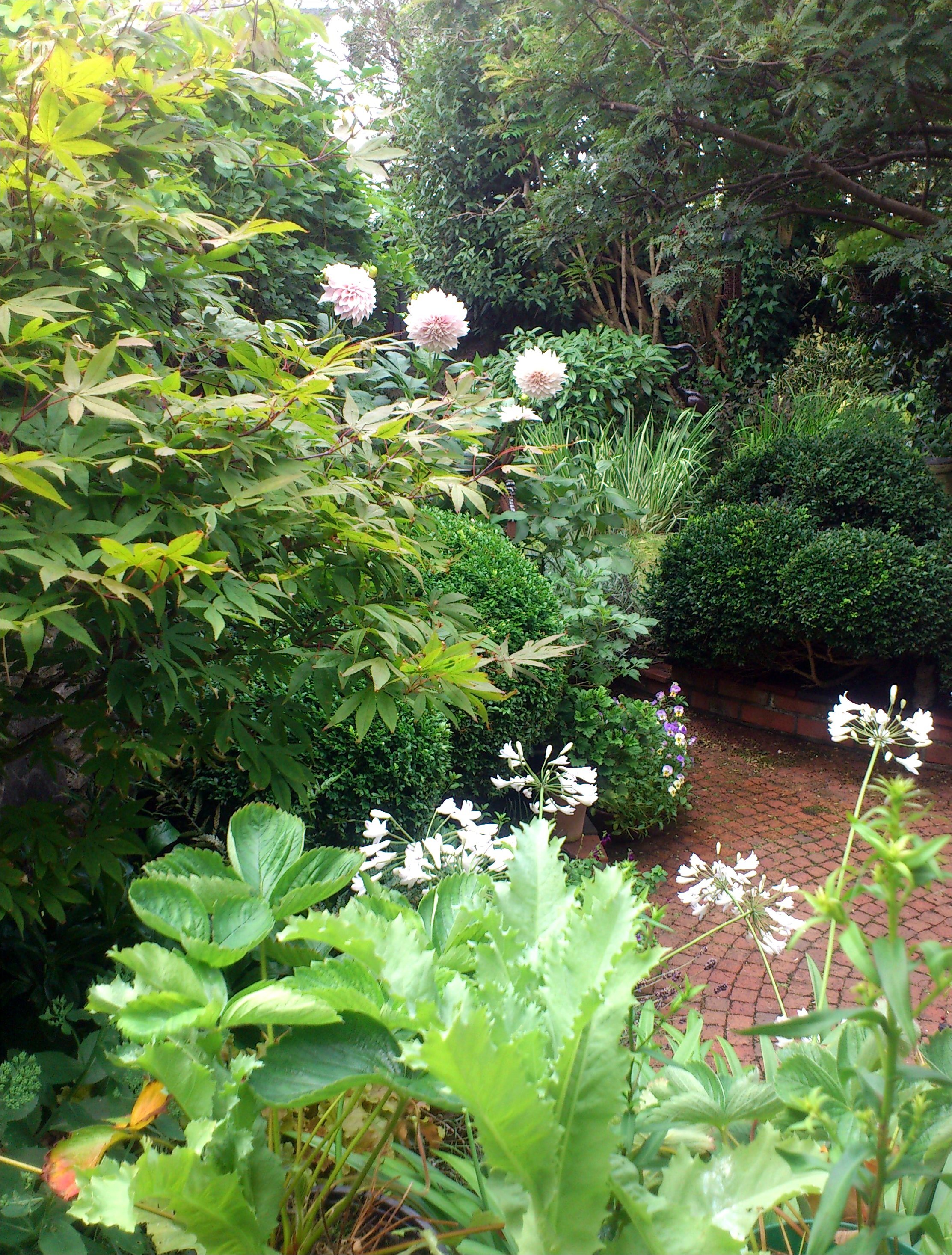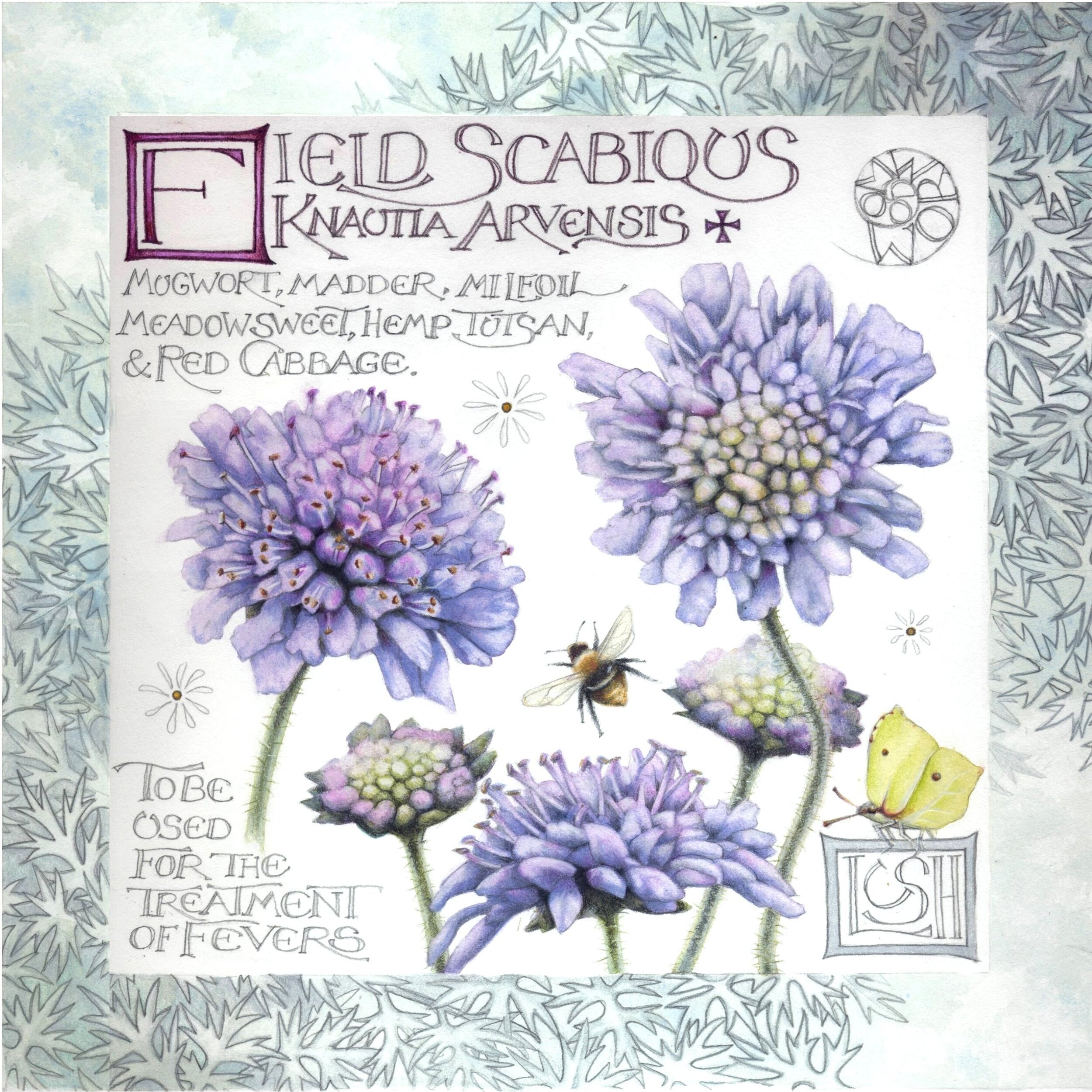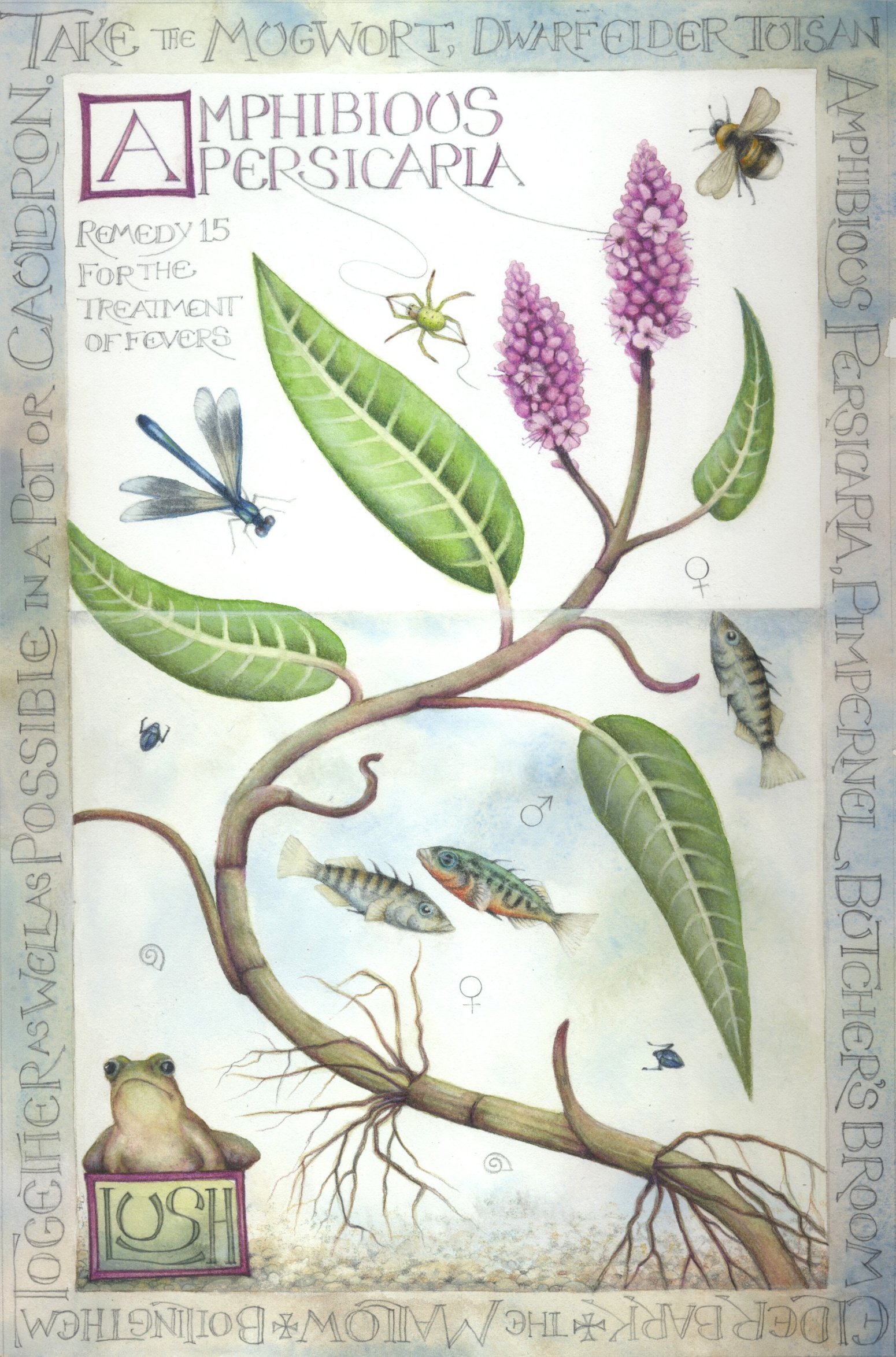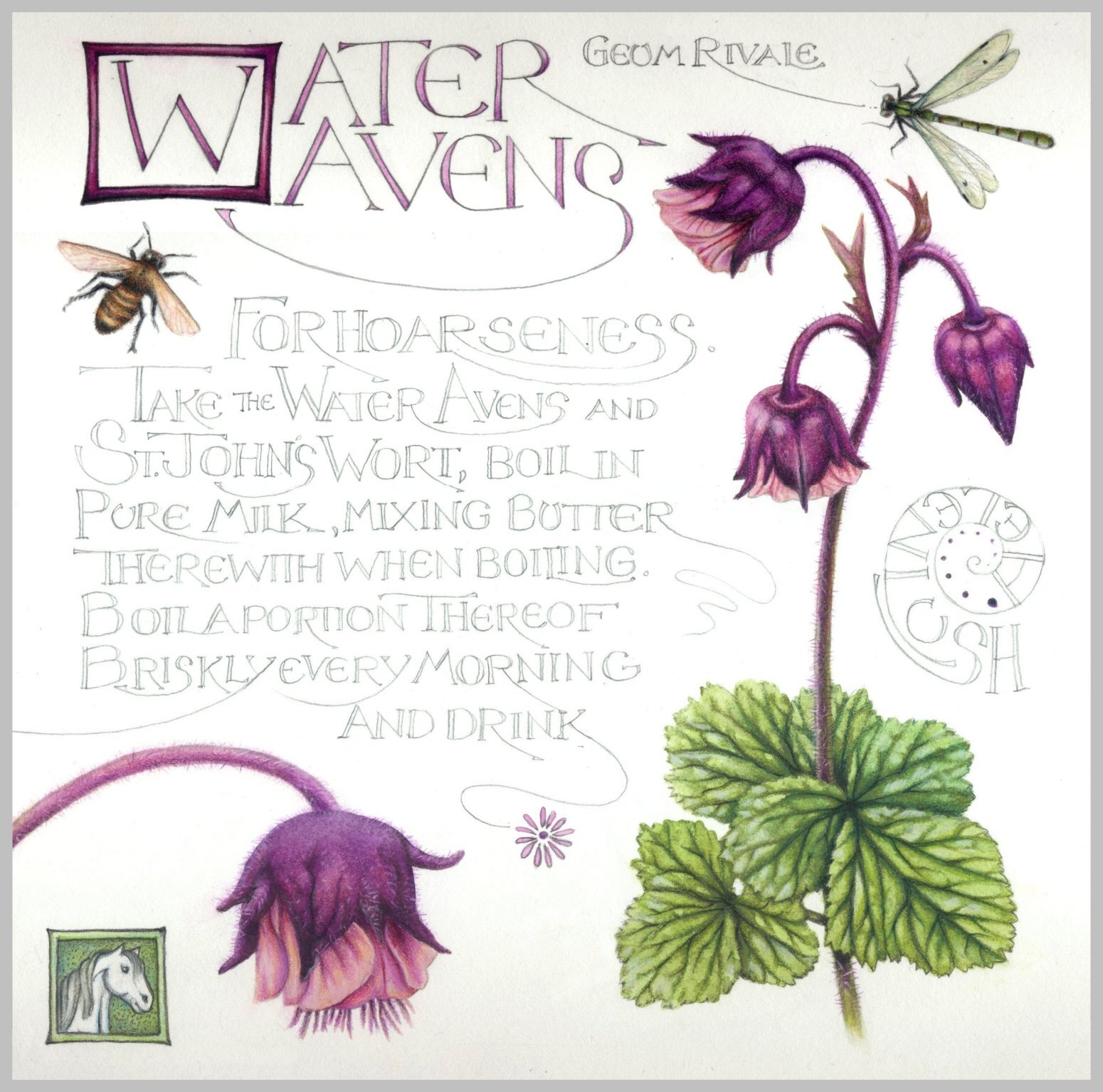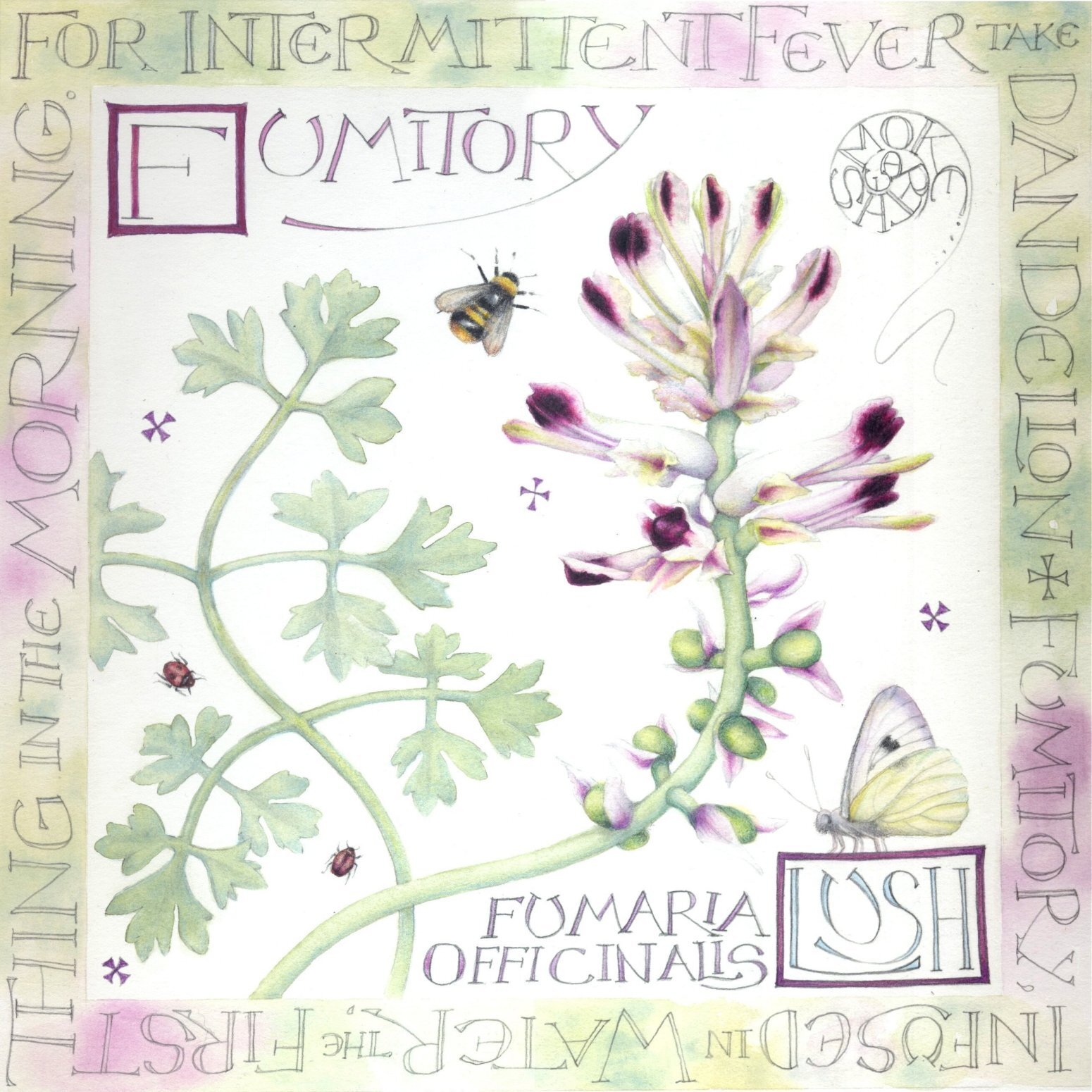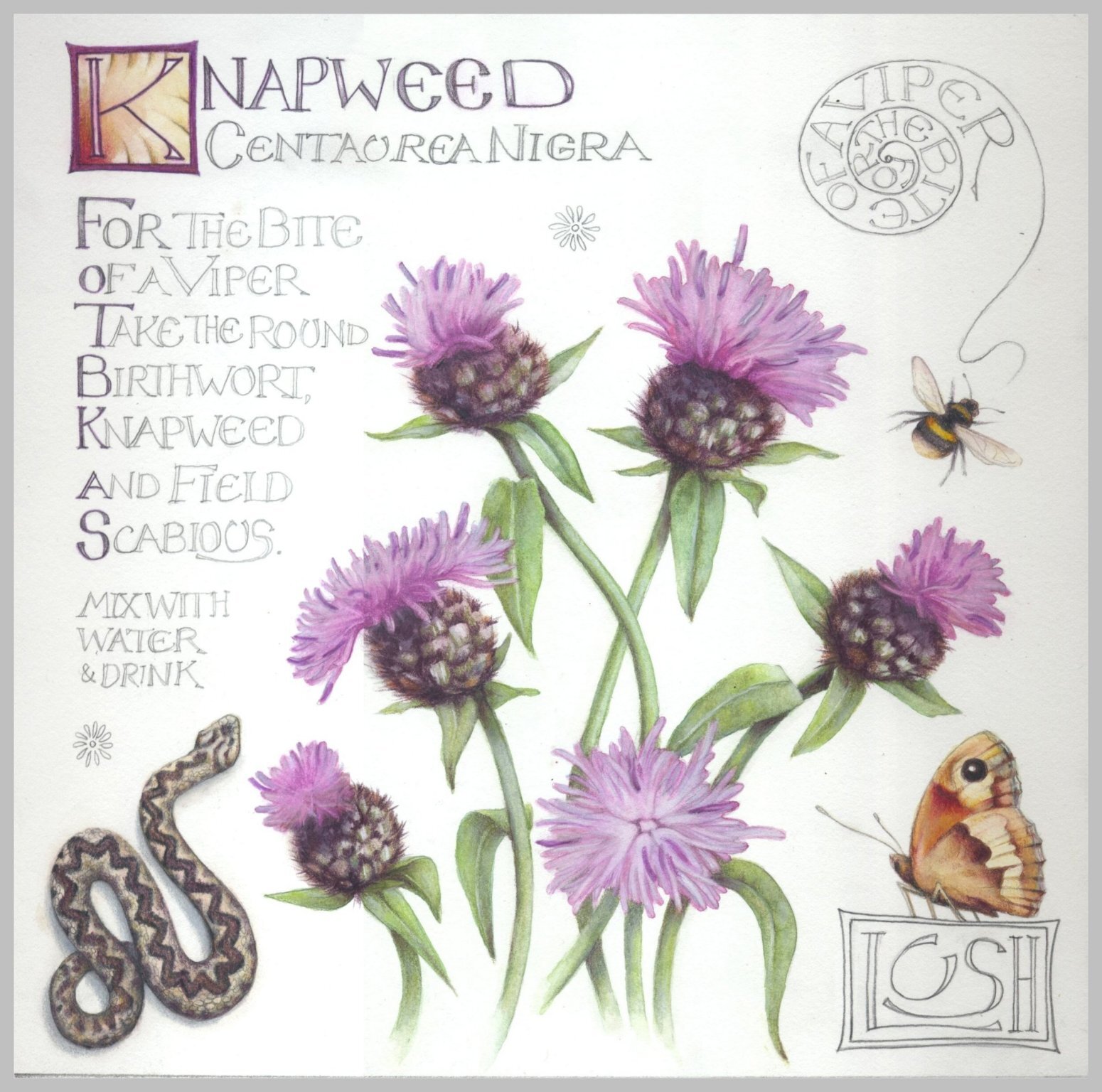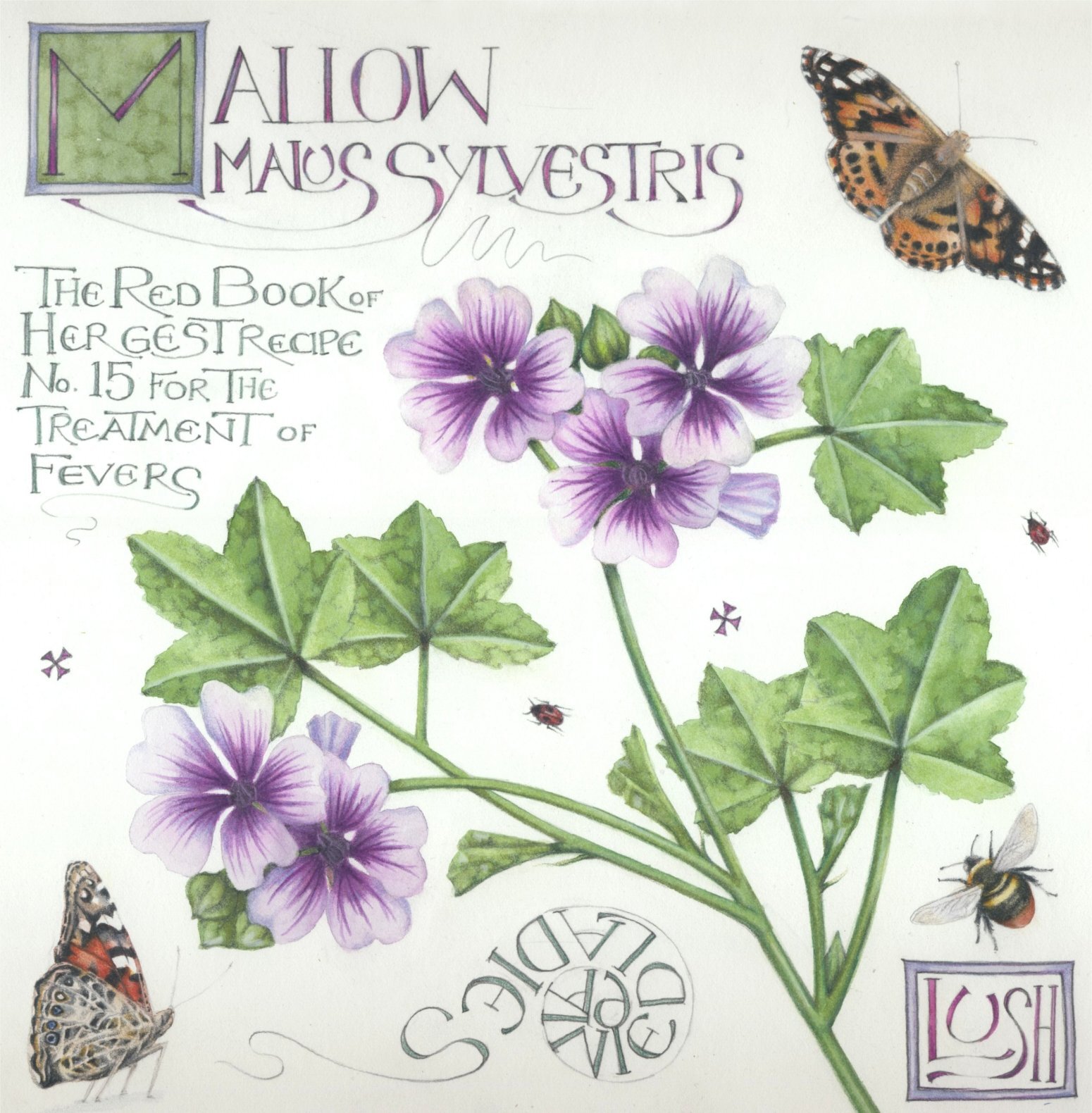Lately I've been experimenting with a different way of using the leaves and flowers from my garden – rather than using a gel plate, I've applied the plant material directly onto wet paper and just added washes of watercolour. I vary the effect by also spraying and dripping the paint and using salt for texture. Once everything is completely dry the leaves can be removed, revealing the exciting results! I love the accidental effects this can produce and use these in my collage pieces or work into them with watercolour and pencil.
A garden artist's year - March to June
March - hellebores
Hellebores are some of the earliest plants to flower in my garden. If you lift their drooping heads they reveal the detail of their speckled and blotched centres. The flowers range from deep plum to snowy white rising up from clumps of leathery leaves and making me feel that summer is on it’s way at last.
April - Primroses
There was only one clump of primroses when we moved in. Year by year they have flourished, spreading around and into the lawn and shadier beds. Now every April they open their gentle gold flowers with shy exuberance. I pick a few to bring the subtle scent into the house and enjoy their sunny faces. William Blake’s poem from Auguries of Innocence features in the calligraphy border around this painting conveying how I often feel when looking closely at the natural world.
May - Tulips
I never used to like tulips, associating them with the stiff, municipal bedding arrangements I grew up with in the 1970s. I’ve changed my mind! Some of today’s tulips are fabulous - the fleshly voluptuous La Belle Epoque, frilly Parrot varieties, striped and streaked and gorgeous colours make me want to go back to painting them again and again. They are even more interesting as the petals fade, twisting into contorted shapes. Every autumn I look forward to leafing through bulb catalogues and imagining the spring displays and potential watercolours.
June - Roses
Munstead Wood - deep saturated magenta velvet flowers unfurl from a perfect tight bud slowly unwrapping a profusion of gorgeously scented folds until the weight bows down their opulent burgundy-drenched heads and fat petals fall softly to earth…
"Stumbling on melons.."
Like many others in this time of pandemic and lock-downs I have really appreciated the value of having an outside space. My small city garden has been a very important part of my life from the first time I laid eyes on it twenty five years ago - when it was just a promising patch of rough ground with a lilac tree. Over the years it has given me inspiration, peace, happiness and a lot of physical exercise - and it is now providing me with leaves and flowers for my mono-printing! The title of this piece is taken from Andrew Marvell's poem, “The Garden”, which seems to express beautifully how I feel about gardens in general. Whether I'm sitting reading with the sun flickering through the leaves of the Rowan tree or tracking down the croaking of a frog to a cranny in the stone wall or just enjoying the sparrows squabbling over the nuts in the feeder; it's all soul food as far as I'm concerned.
Most of my botanical watercolours feature plants that I've grown over the years. A lot of the plants are in pots which I move around to create interesting combinations and textures. One can't help but feel optimistic when planting tulip bulbs in the winter, looking forward to them emerging in the spring and opening their gorgeous flowers in celebration of the new season, or planting seeds to watch them growing like miracles from almost nothing to a tapestry of summer colour. I find there is interest everywhere from the forms and colours of the trees and plants, to the detail of the tiny world within each flower.
I visit national gardens whenever I can and Cardiff has some lovely green spaces. There's something very special about wandering through drifts of planting as tall as myself – a managed wilderness to lose oneself in! Orchards too – the gnarly fruit trees, birds and insects, dappled shade and grass strewn with wildflowers – seem to create a timeless paradise. My own garden sanctuary provides me with a restful and ever changing canvas to rest my gaze, leaving room for the imagination to roam and play - “Annihilating all that's made, to a green thought in a green shade”.
The Physicians of Myddfai – Roots of Magic
The Physicians of Myddfai were herbalists who practised healing with plants around the village of Myddfai in Carmarthenshire in the 12th century. This was a time of great learning and new ideas, with the first universities being founded and monastic schools established. The monastery at Strata Florida – which means layers of flowers – was built around this time, sponsored by the Welsh prince Lord Rhys, and became a renowned centre of herbal healing. The scholasticism of the monks would have encouraged the preserving of the recipes in written form but it is likely that they stemmed from centuries of knowledge passed down orally among the Welsh tribes and villages.
A few years ago our exhibiting group Roath Botanic Garden Artists put on a show called “Roots of Magic - The Healing Plants of Myddfai” inspired by them. The exhibition was at the National Botanic Garden of Wales in Carmarthenshire, which itself has a physic garden and an Apothecary's Hall – a re-created Edwardian pharmacy where most medicines were made from plant materials and extracts.
The ideas behind my work for this exhibition came from some of the many herbal recipes passed down by the Physicians of Myddfai and recorded in a 14th century manuscript named the Red Book of Hergest. Many of these recipes appear extraordinary to our modern eyes and included cures for all manner of ailments. My paintings are based mainly on recipes for the treatment of fever – see image above – but don't try this at home! The plants are featured in watercolour with calligraphy, butterflies and other small creatures.
Insole Court - maple leaves and gothic stone
Insole Court is a Victorian Gothic Revival mansion house and garden in Cardiff. The Insoles were pioneering coal-shippers, mine-owners and railwaymen during the Welsh Steam Coal’s dominance of world industry.
In 2019 our exhibiting group, Roath Botanic Garden Artists, put on an exhibition of our work there. The group's general aim is to illustrate and celebrate the plant life of Cardiff parks, gardens and natural environments with each of our six artists working in very different styles and media.
The house and gardens are in the process of being renovated, but many of the rooms have been completed and it is well worth a visit. Much of the decor is in the Gothic Revival style used by William Burges in Castell Coch and Cardiff Castle with detailed flora and fauna decorating many of the walls and ceilings.
In a departure from my usual medium of watercolour, for this exhibition I used fallen leaves from some of the Japanese Maples in the Insole Court grounds and other plant material to produce a series of monoprints, which I then combined with greyscale prints of one of my pencil drawings of the garden's stone steps from many years ago. Unfortunately the lovely old Magnolia trees that used to flank the steps are no longer there, although there are some amazing trees in the grounds. This sequence of collages was inspired by three elements - the garden's architecture, the lovely collection of Maple trees, and an exquisite stained glass window on the landing of the main house.
Rainforest painting - "Those who find beauty in all of nature..."
Rainforest Hummingbird painting commission
Read MoreMonoprints - from the garden
Monoprinting with garden leaves and flowers
Read More
